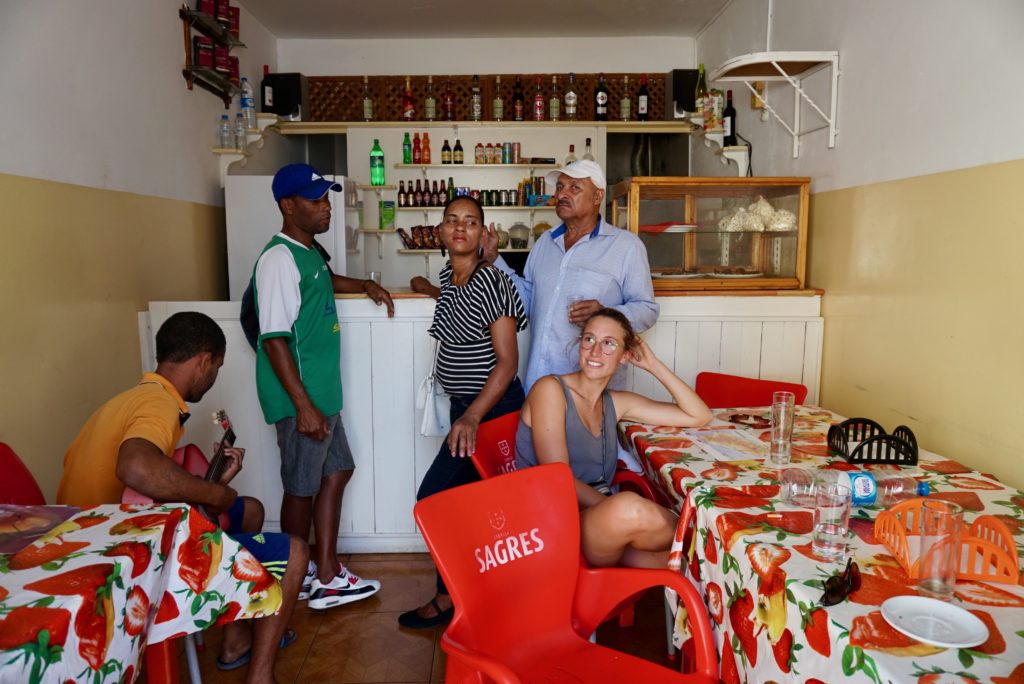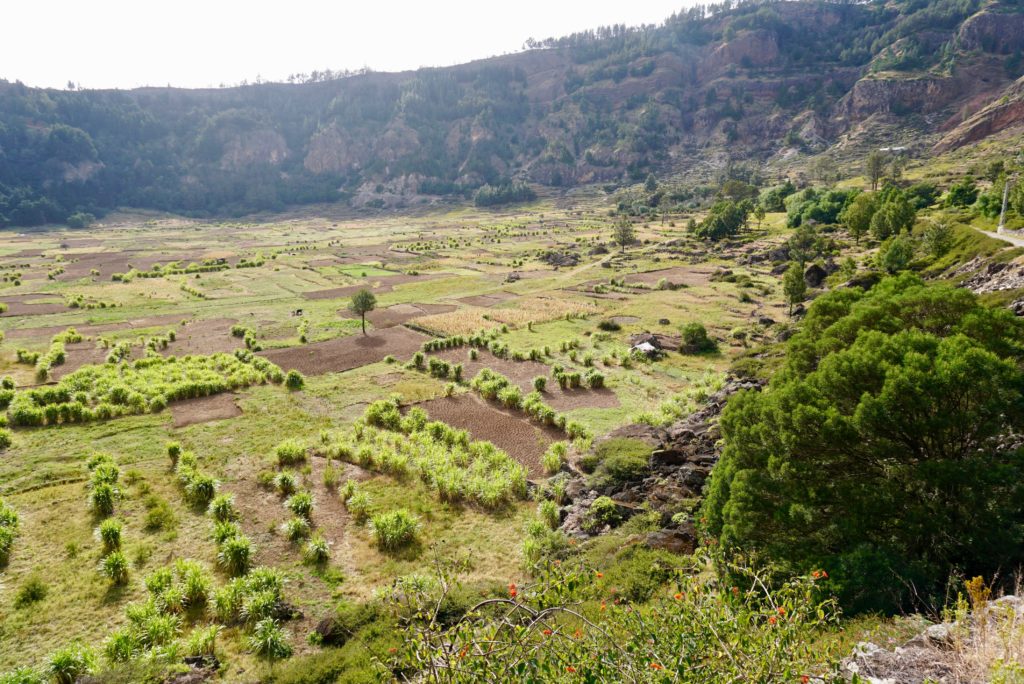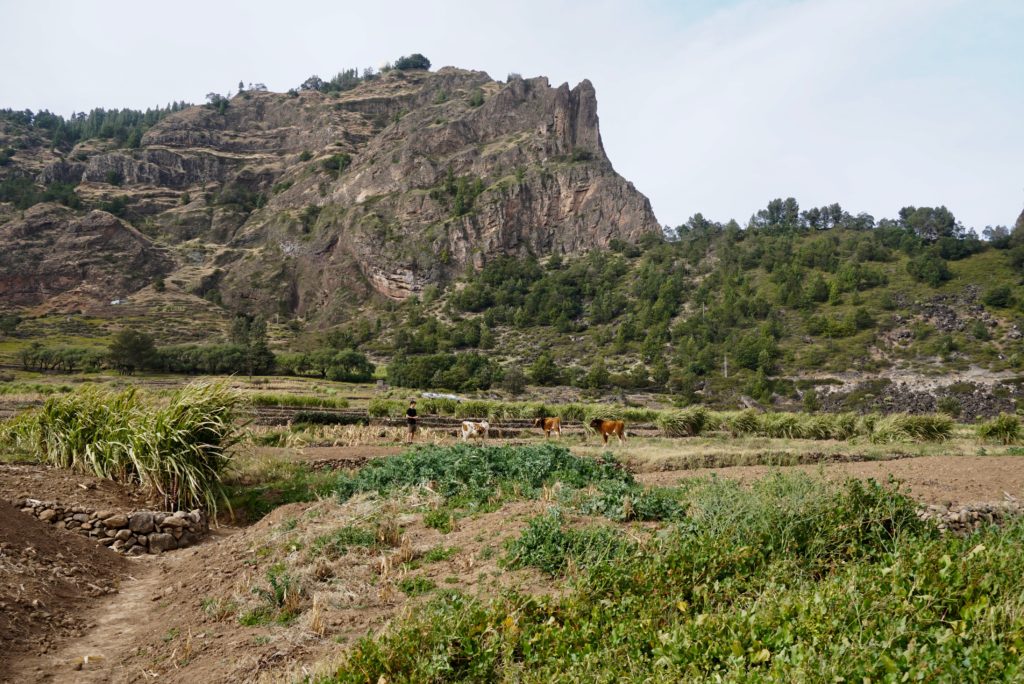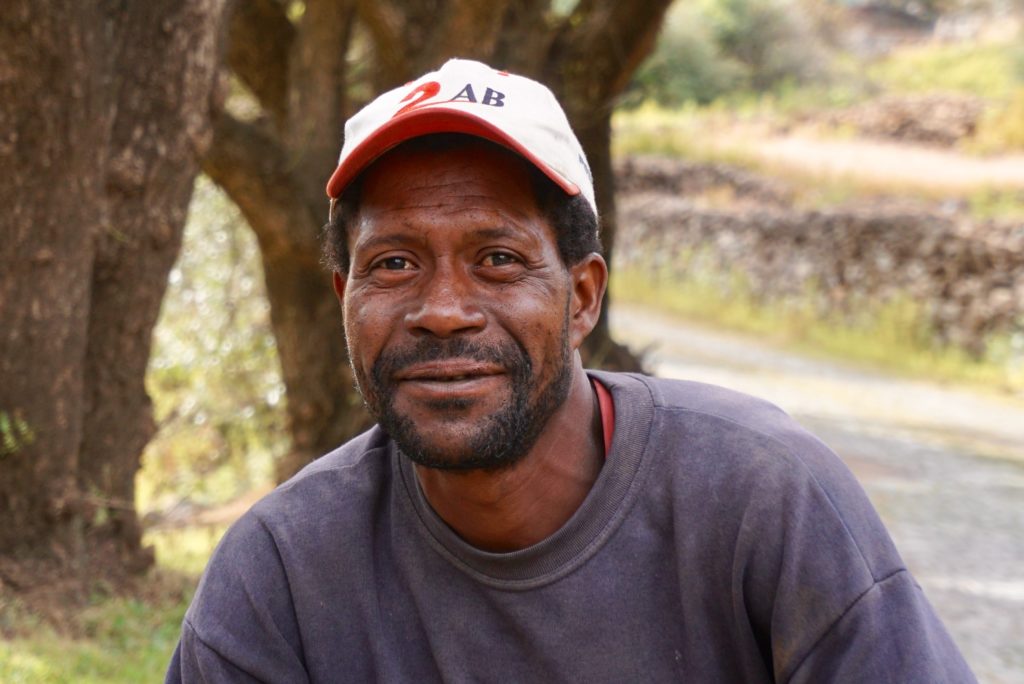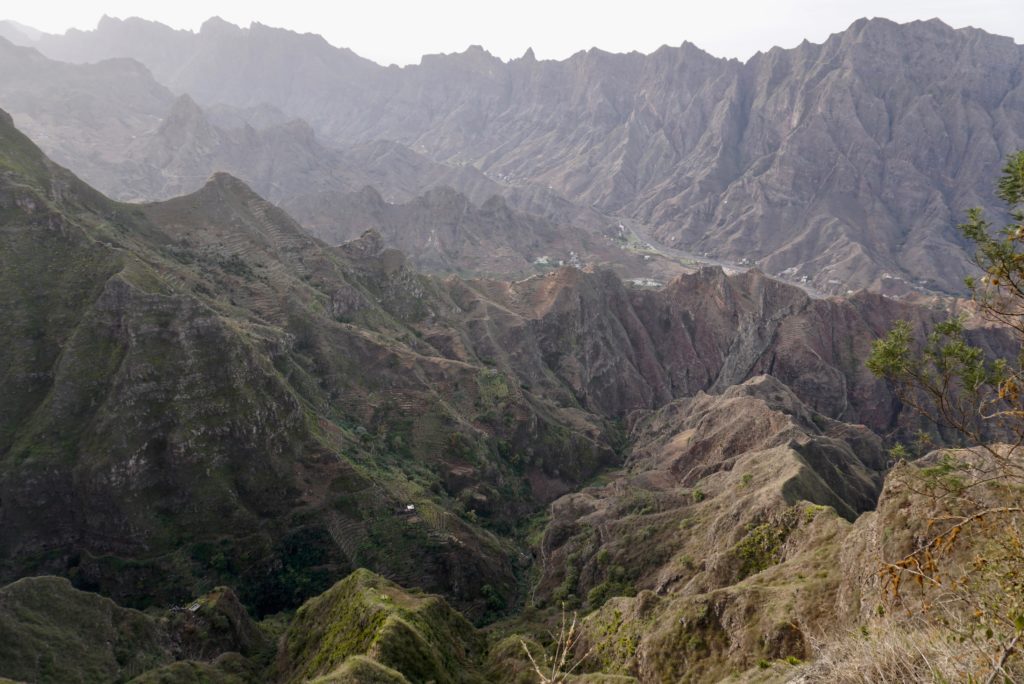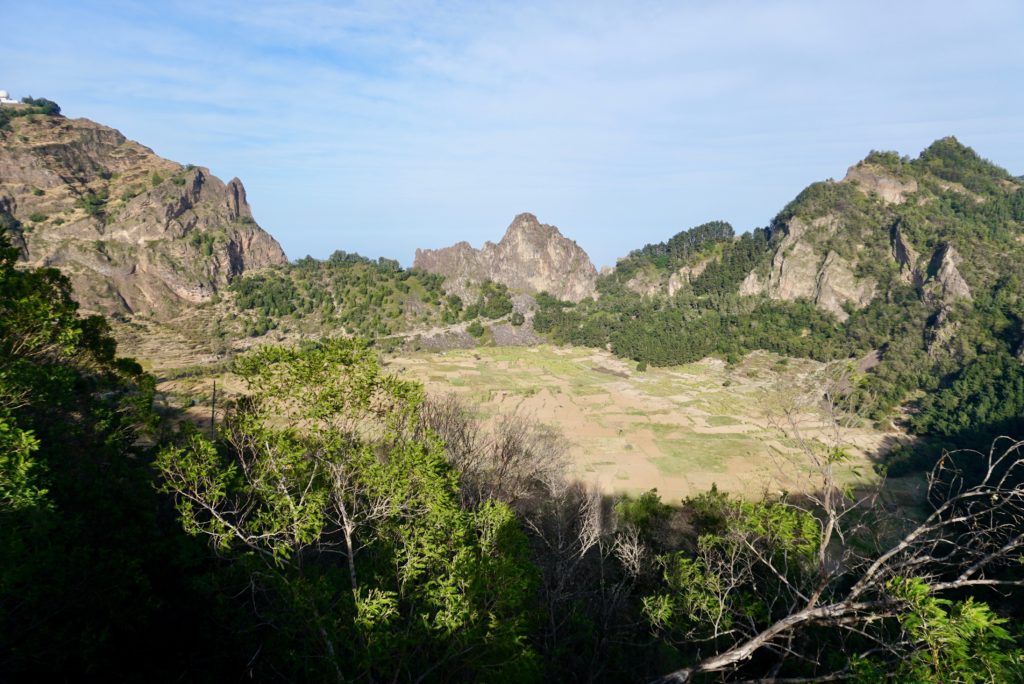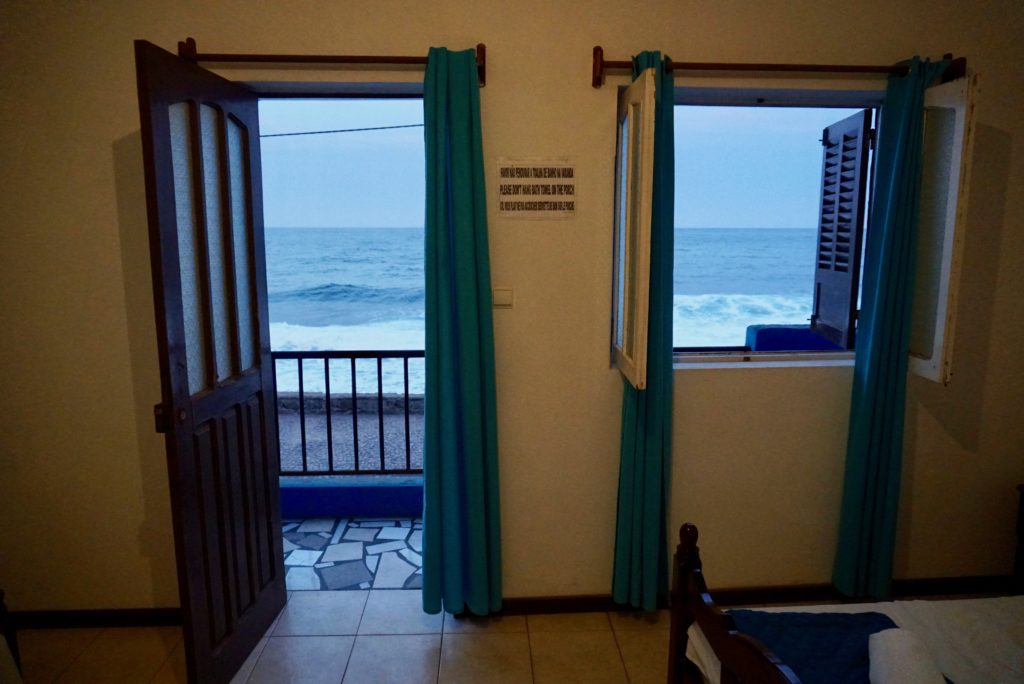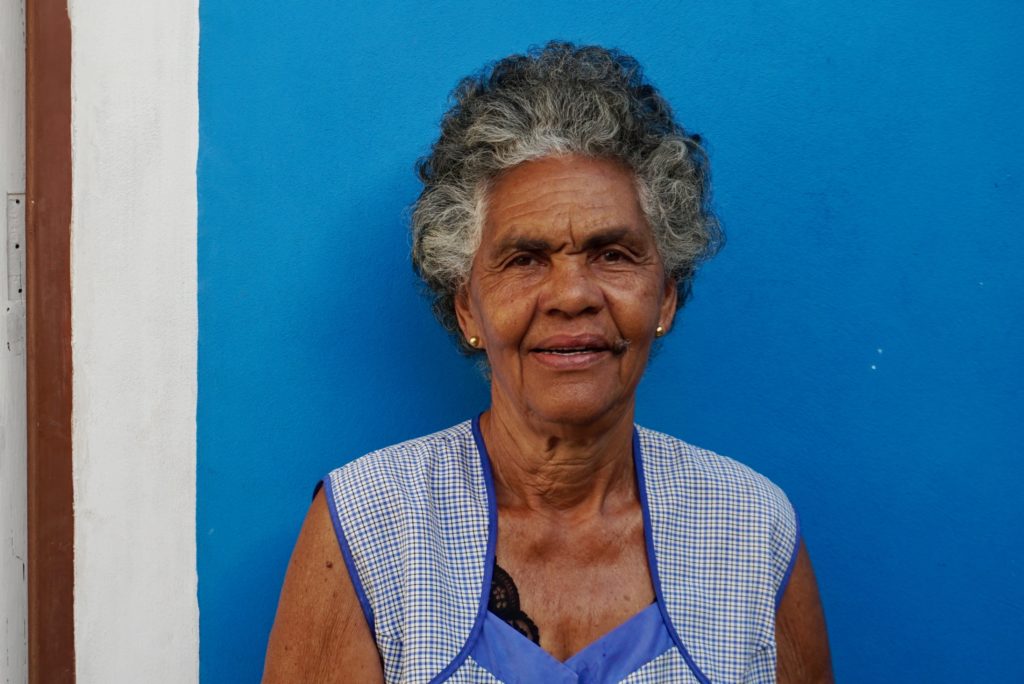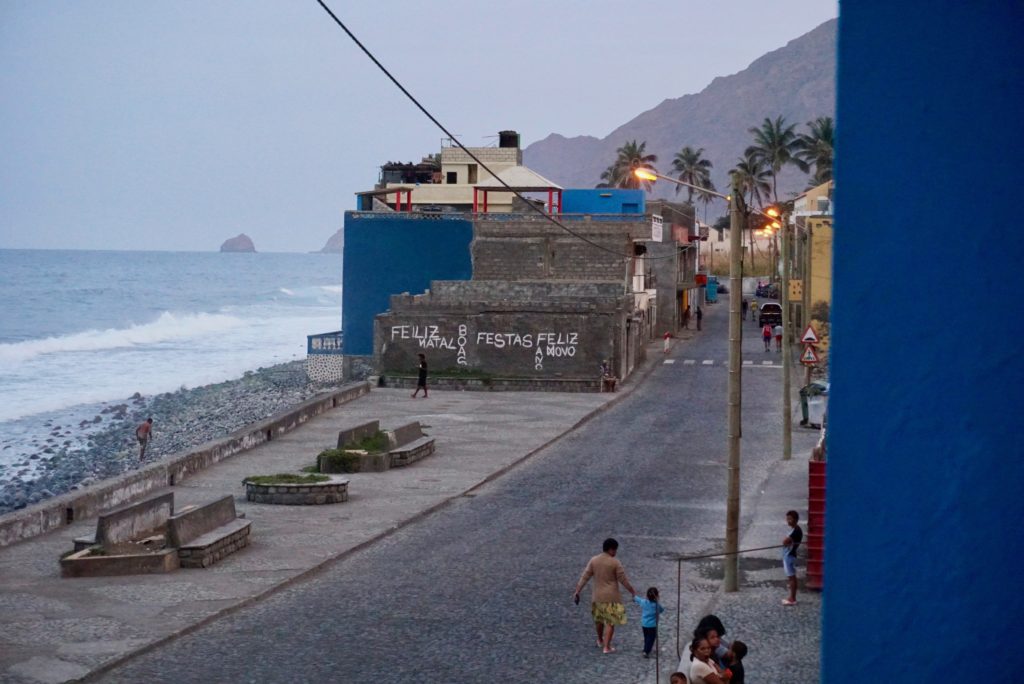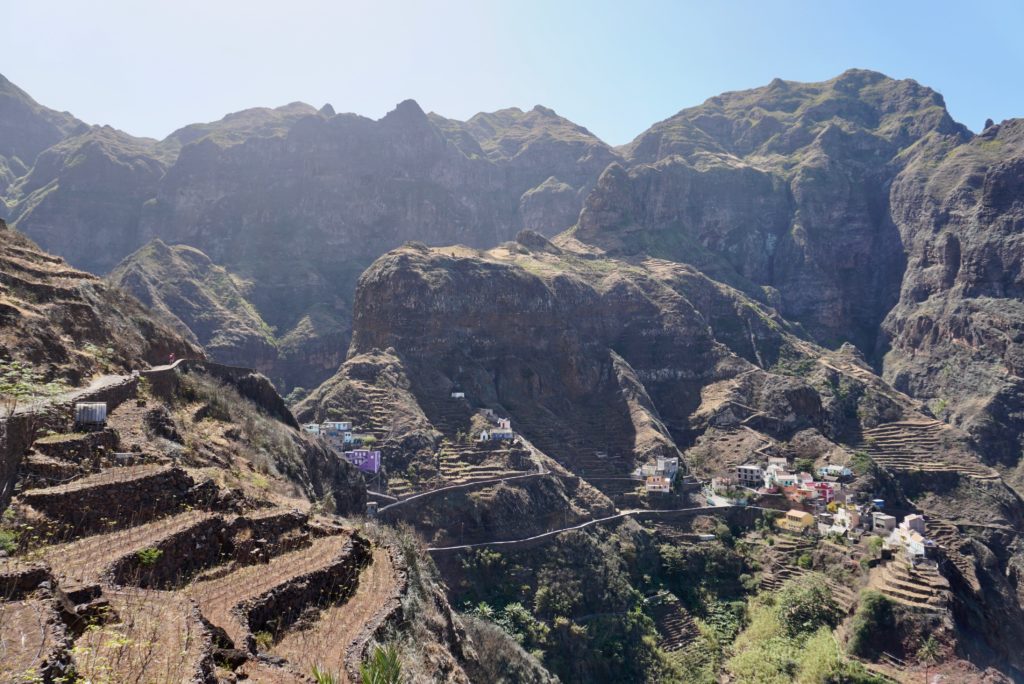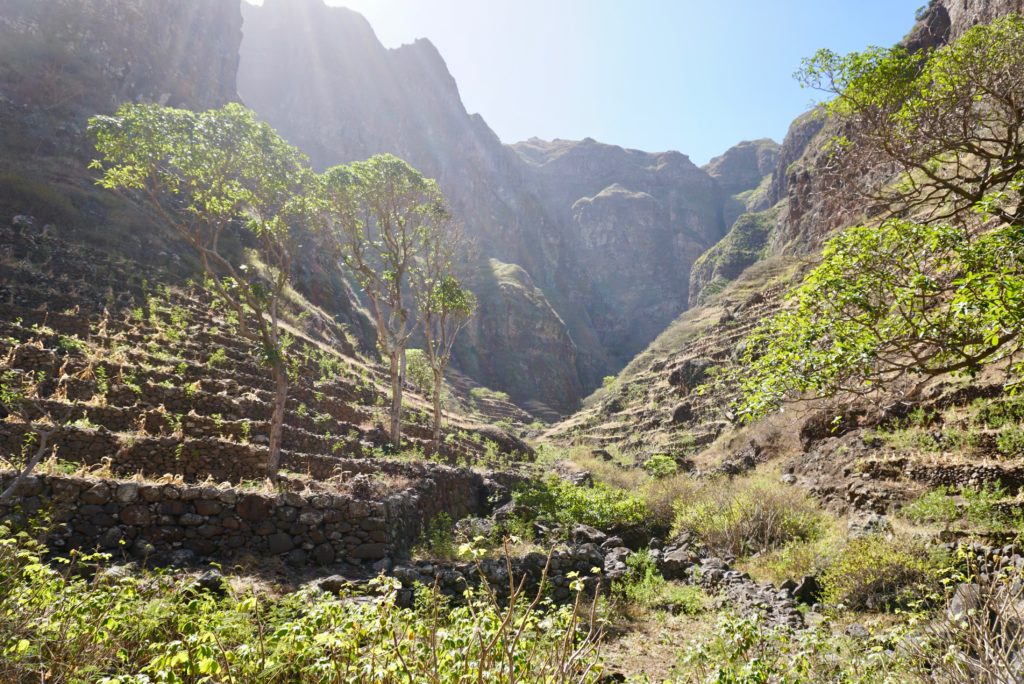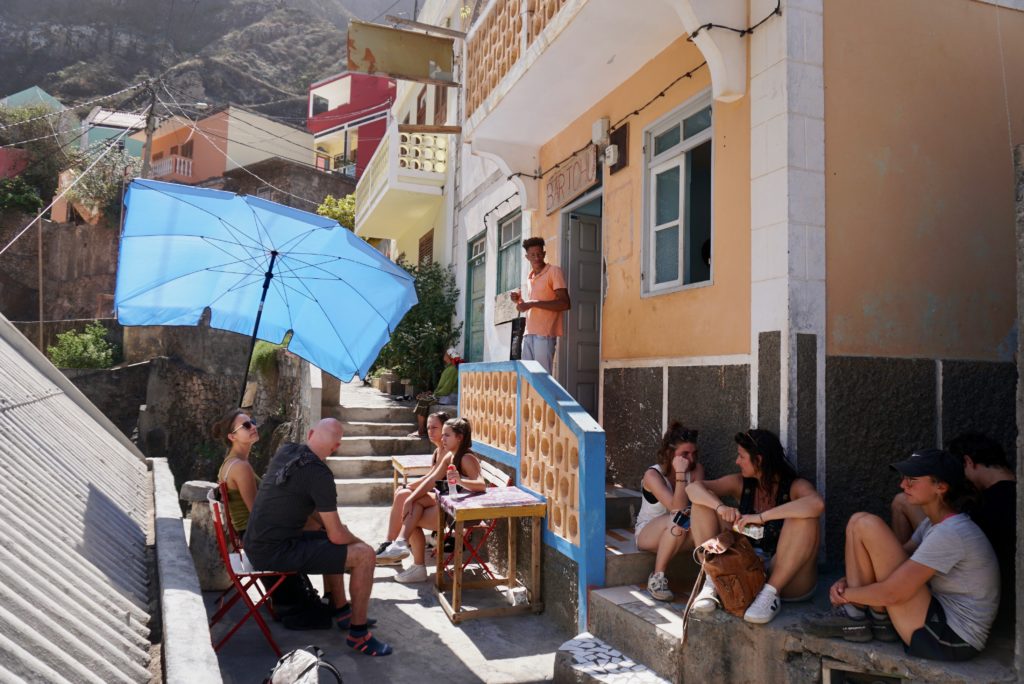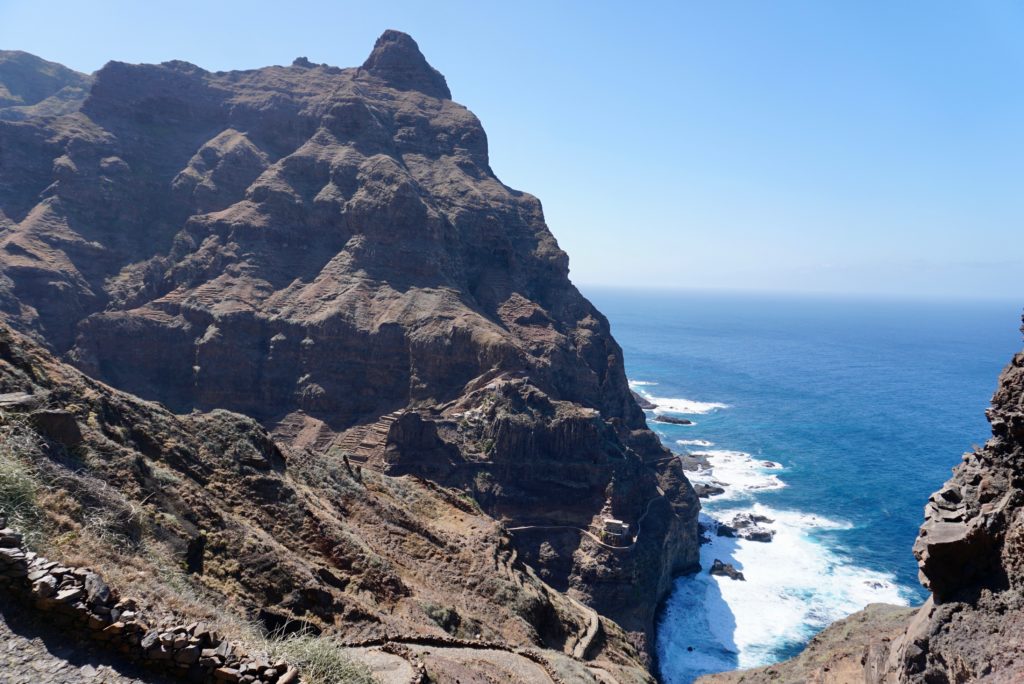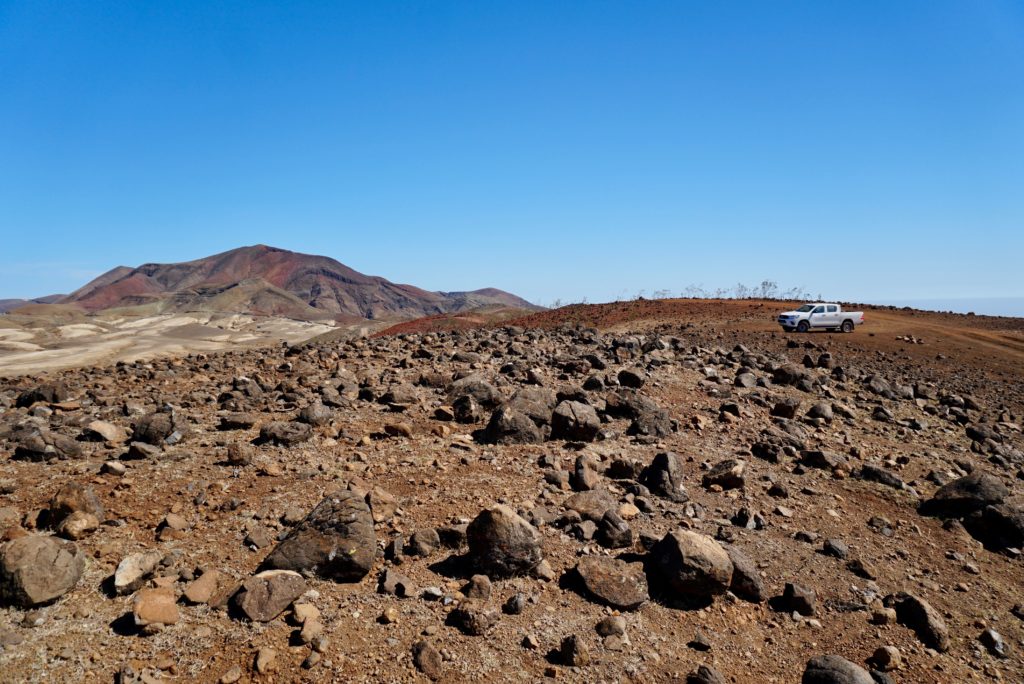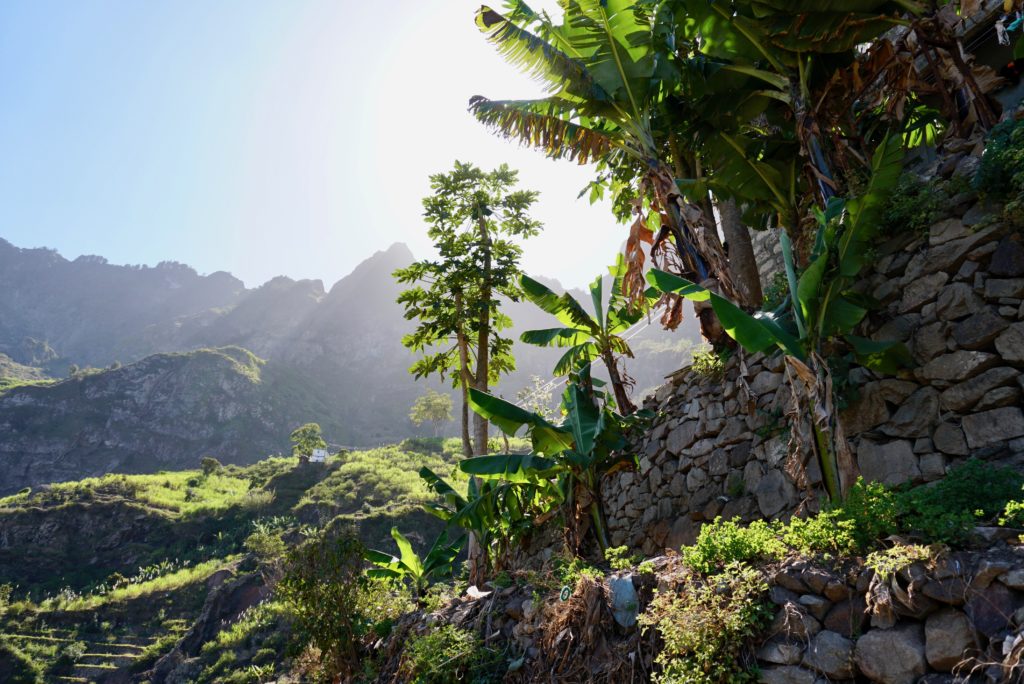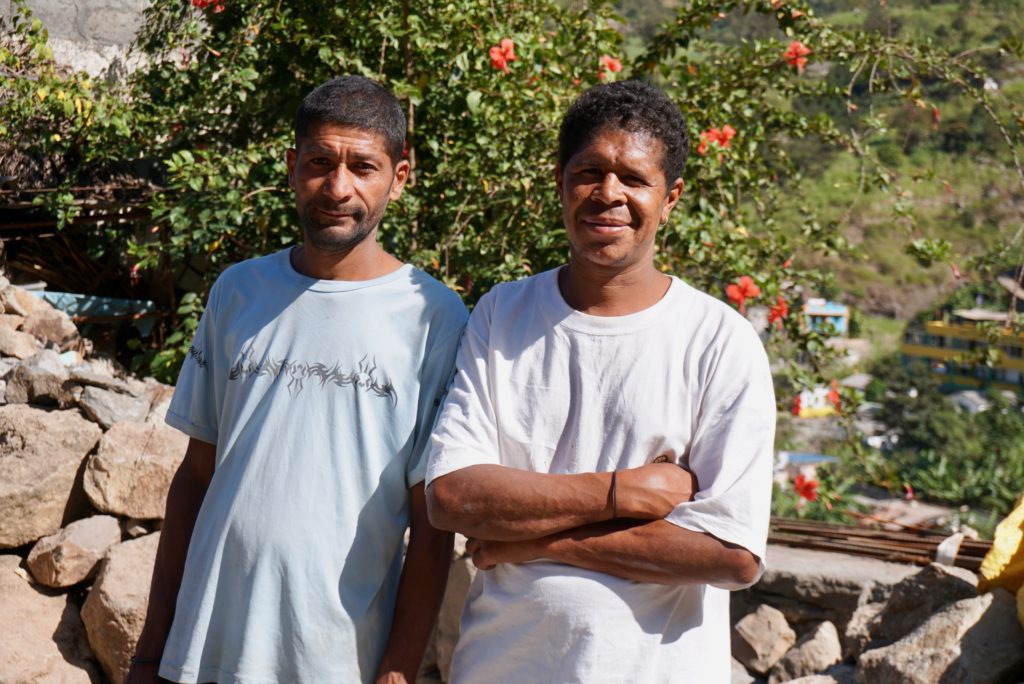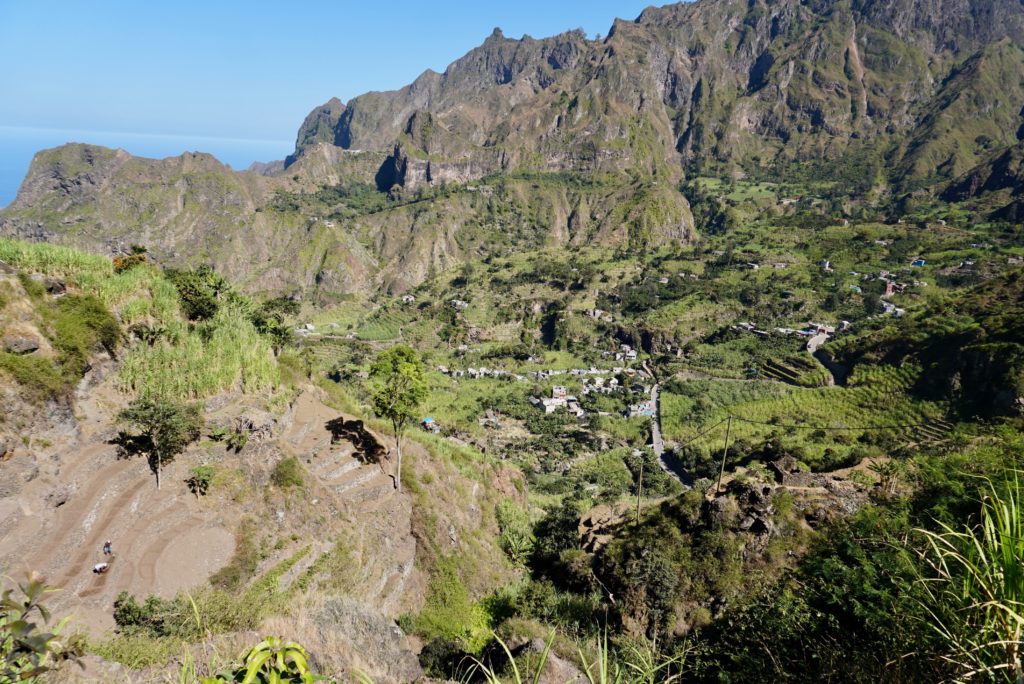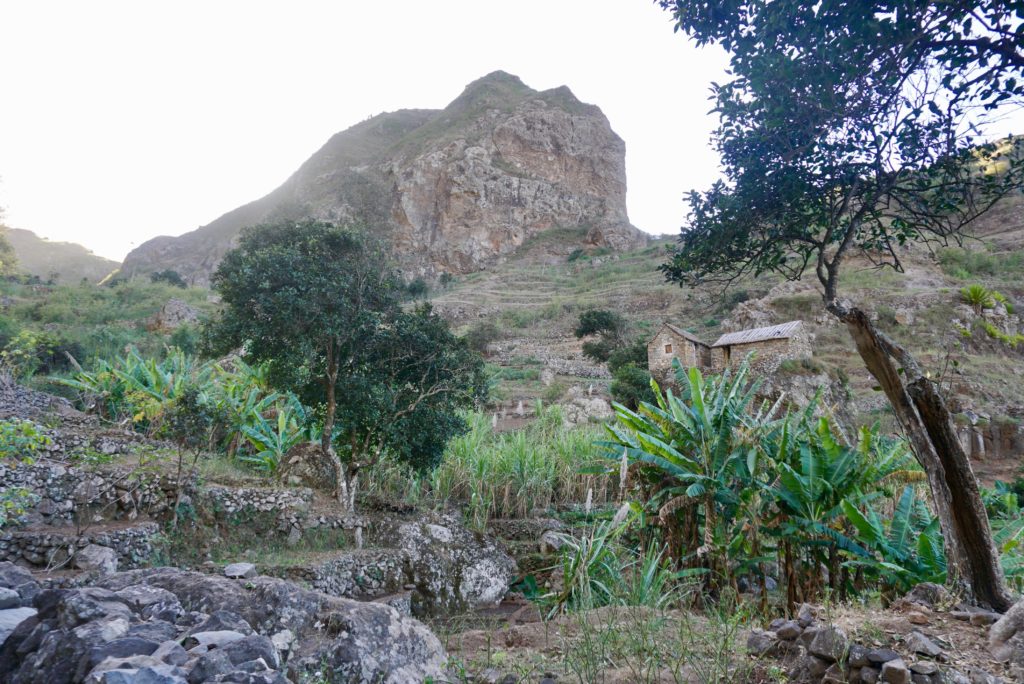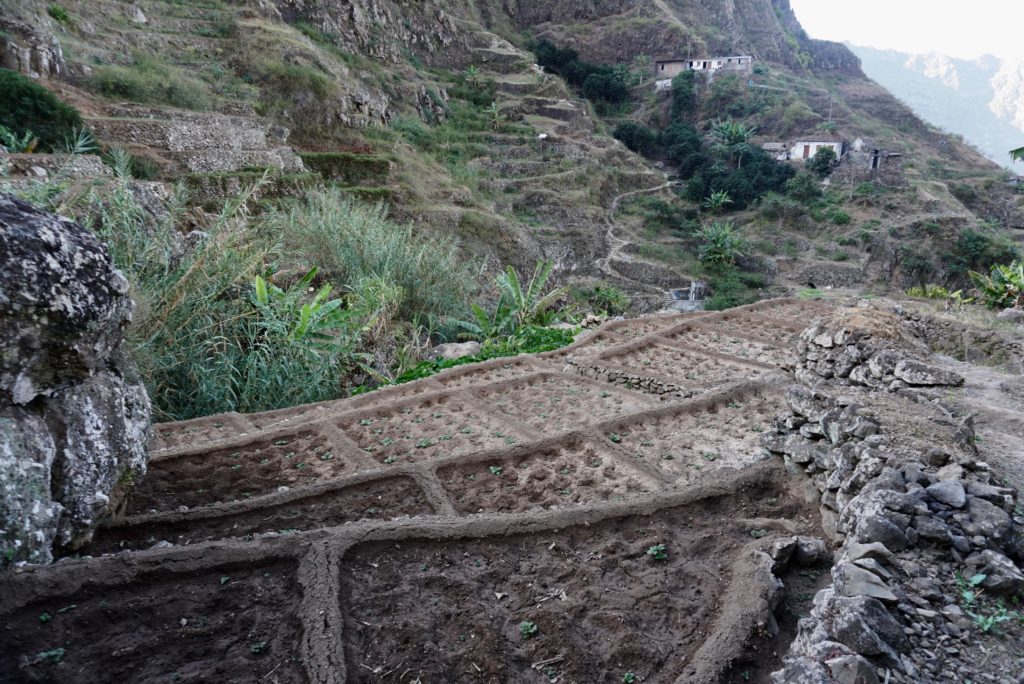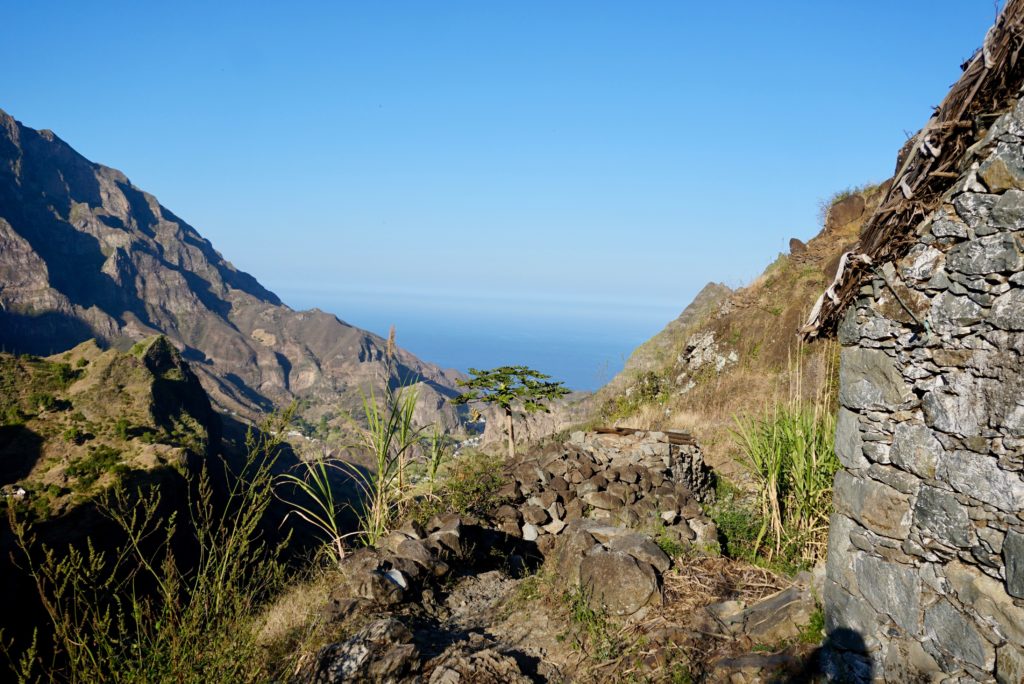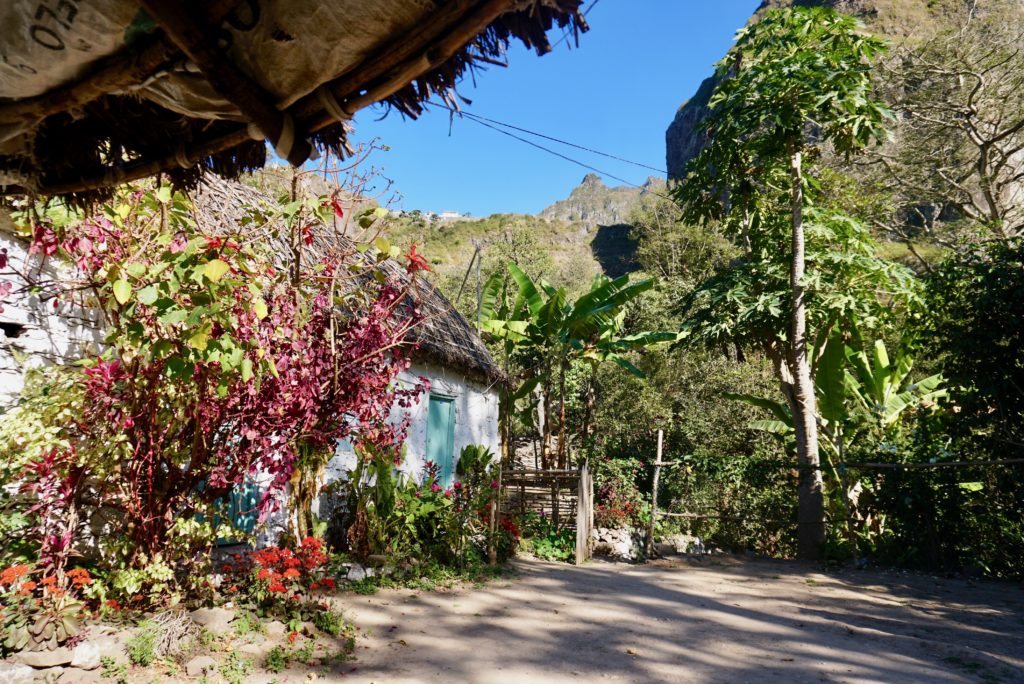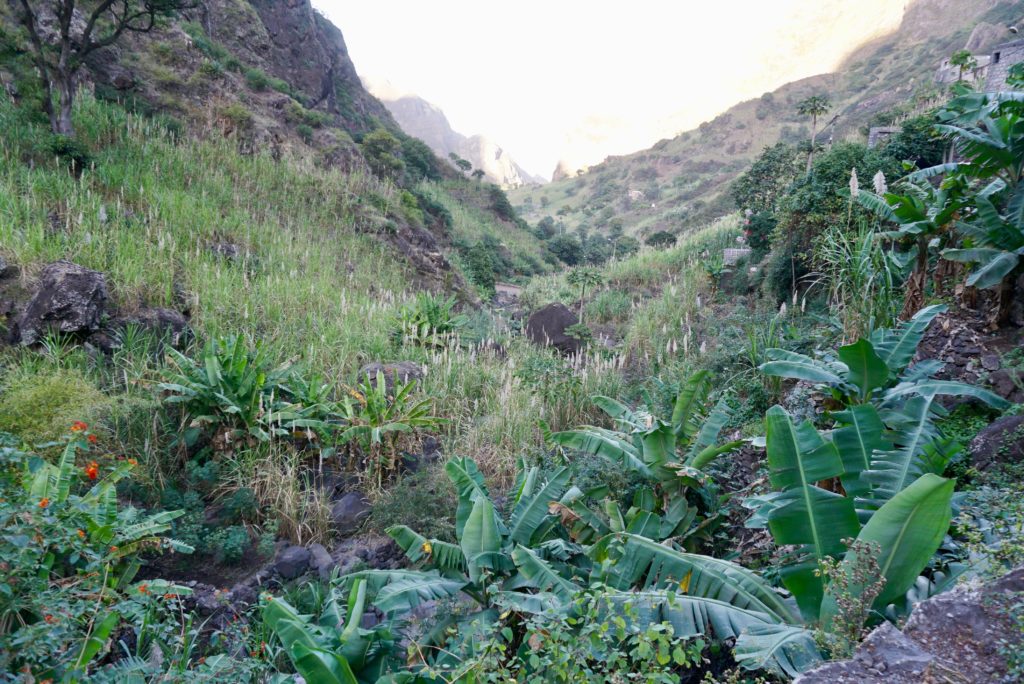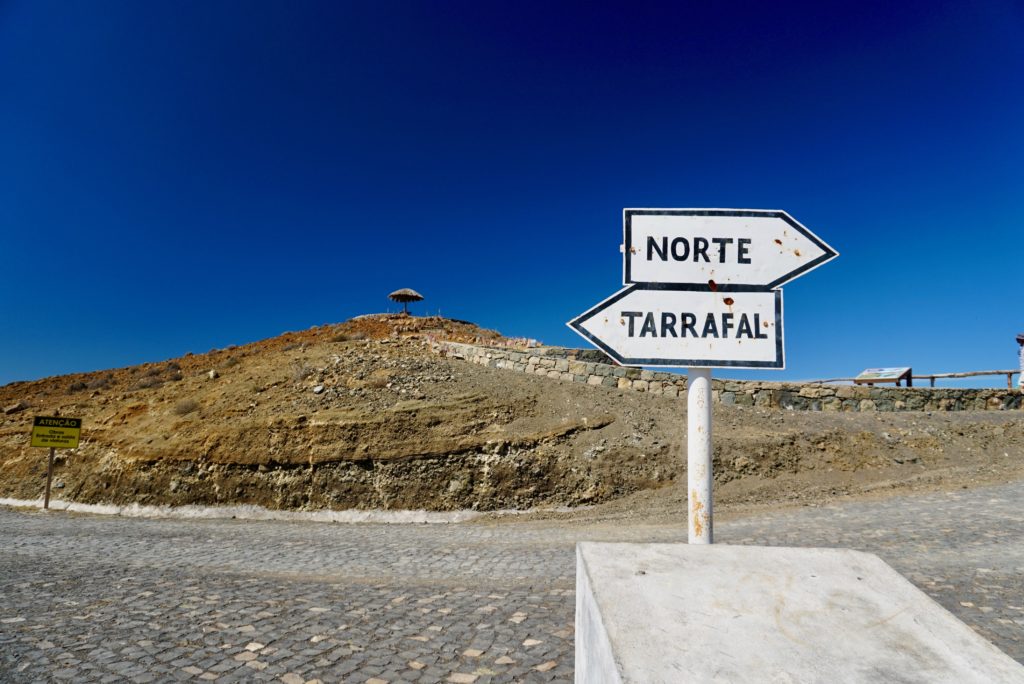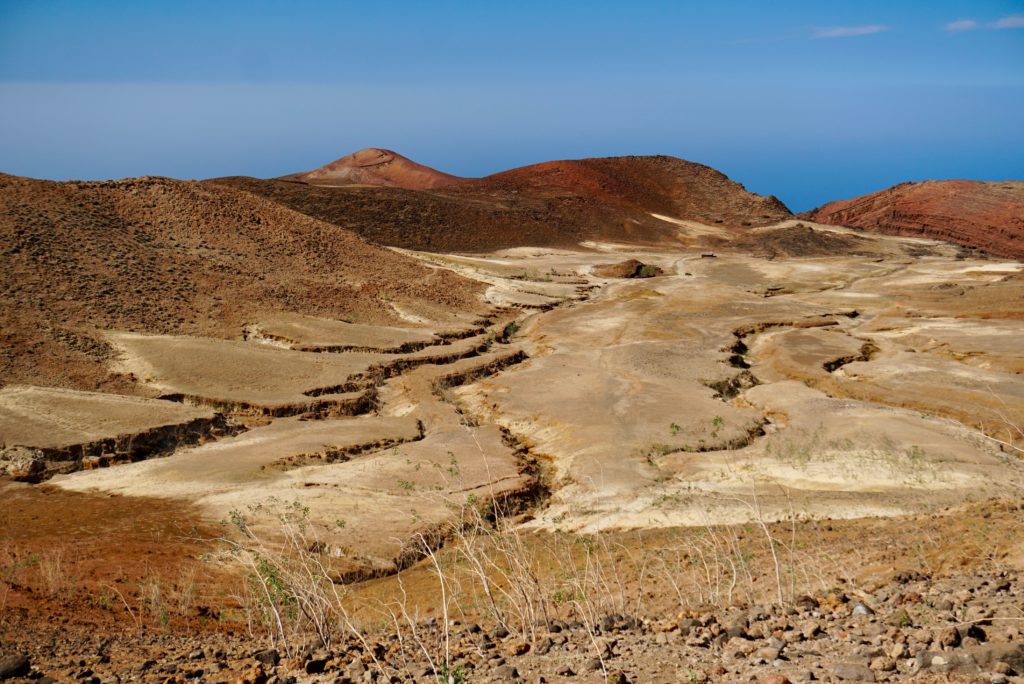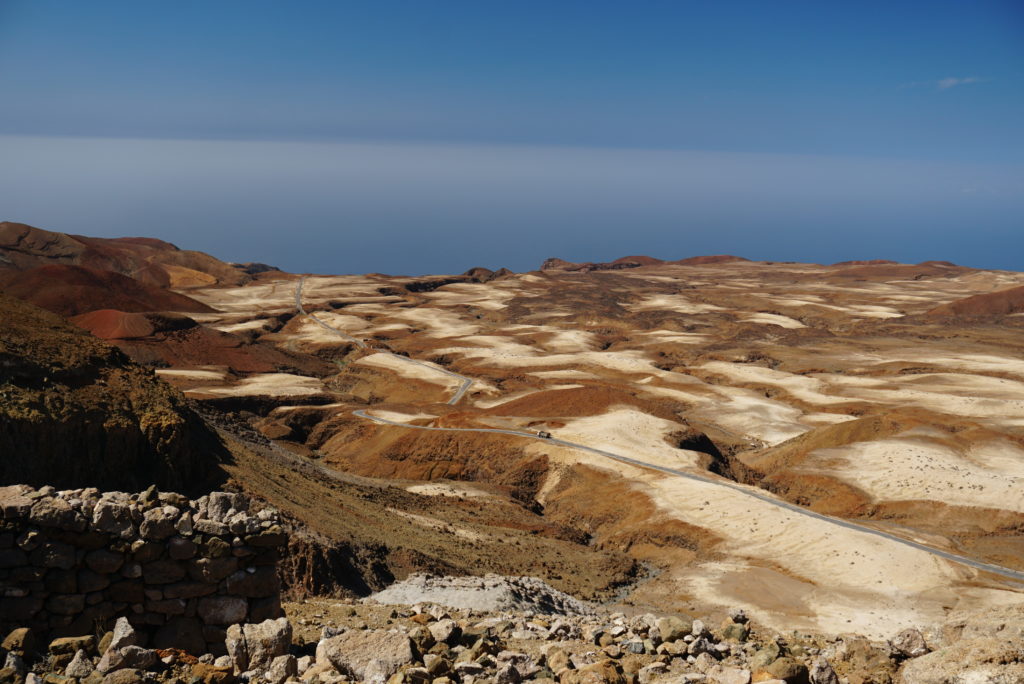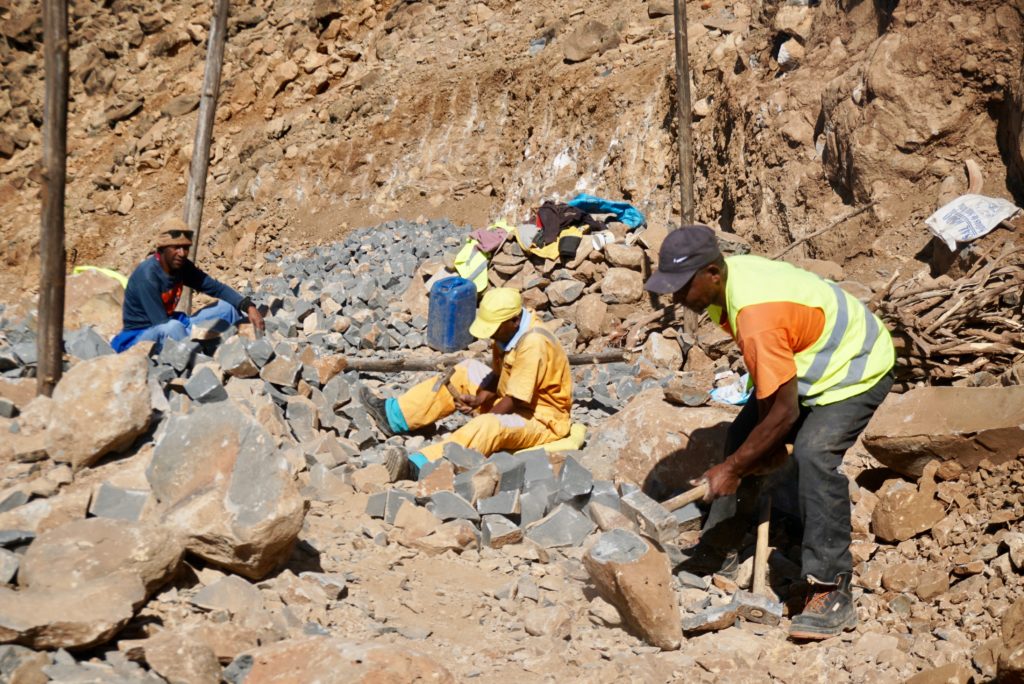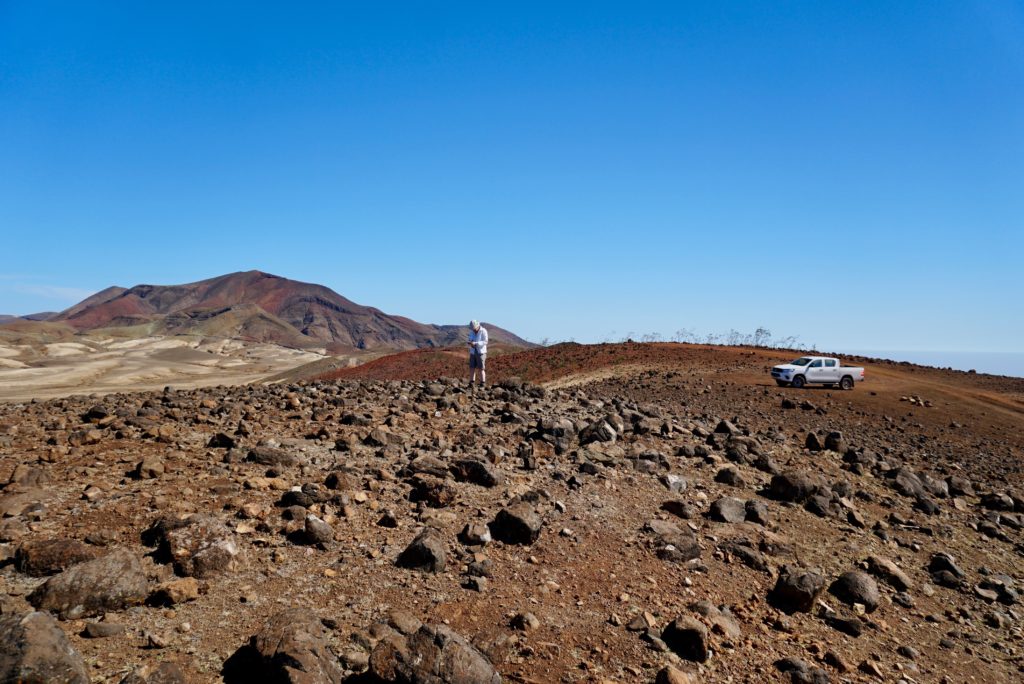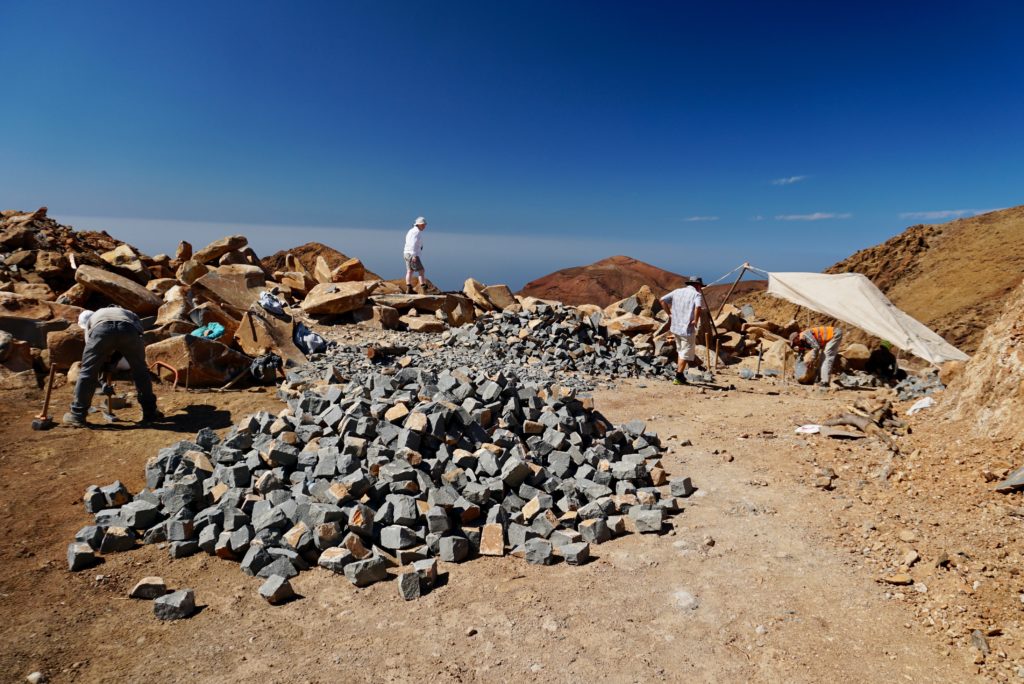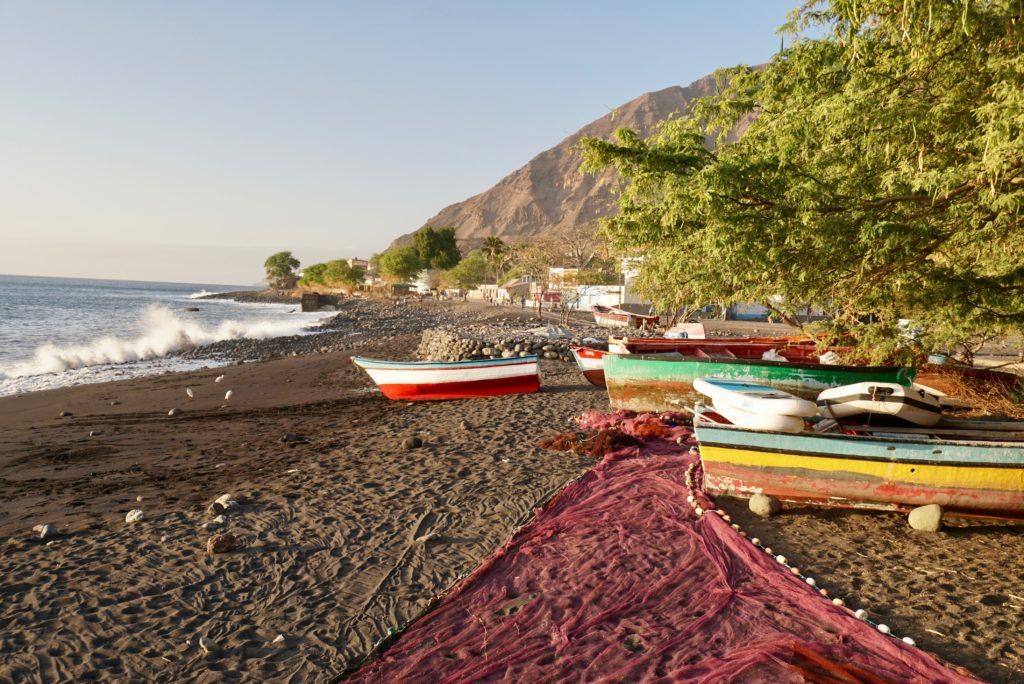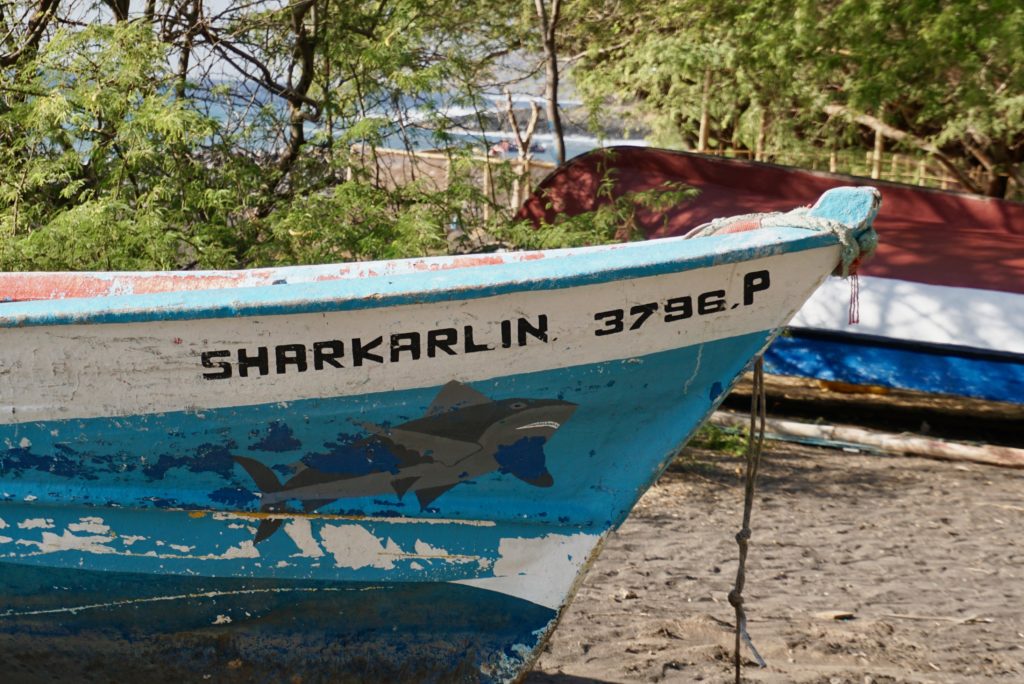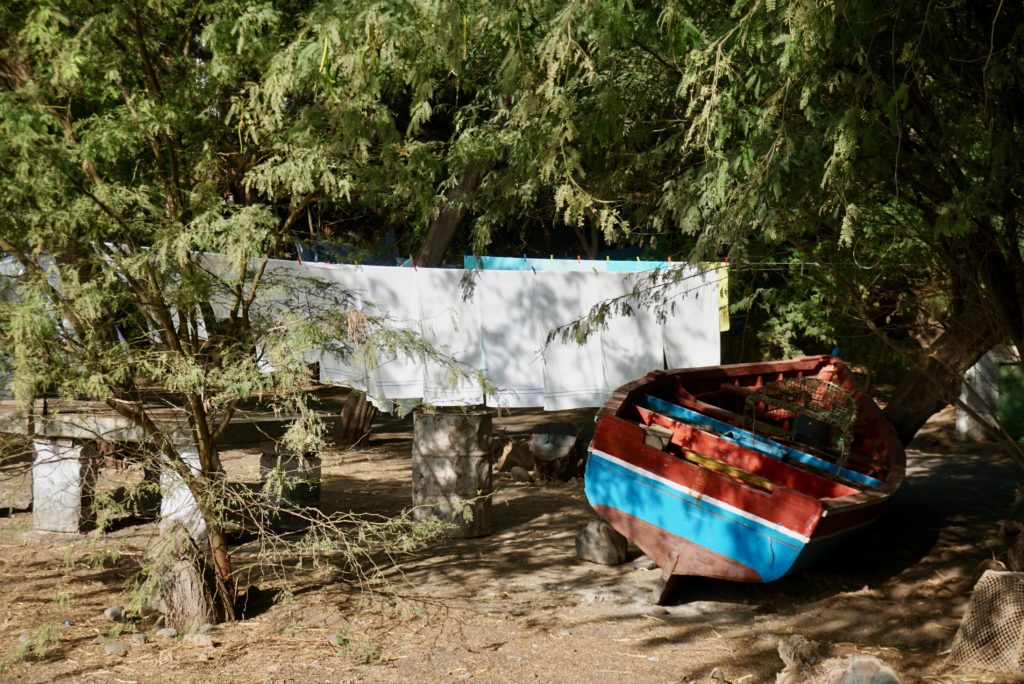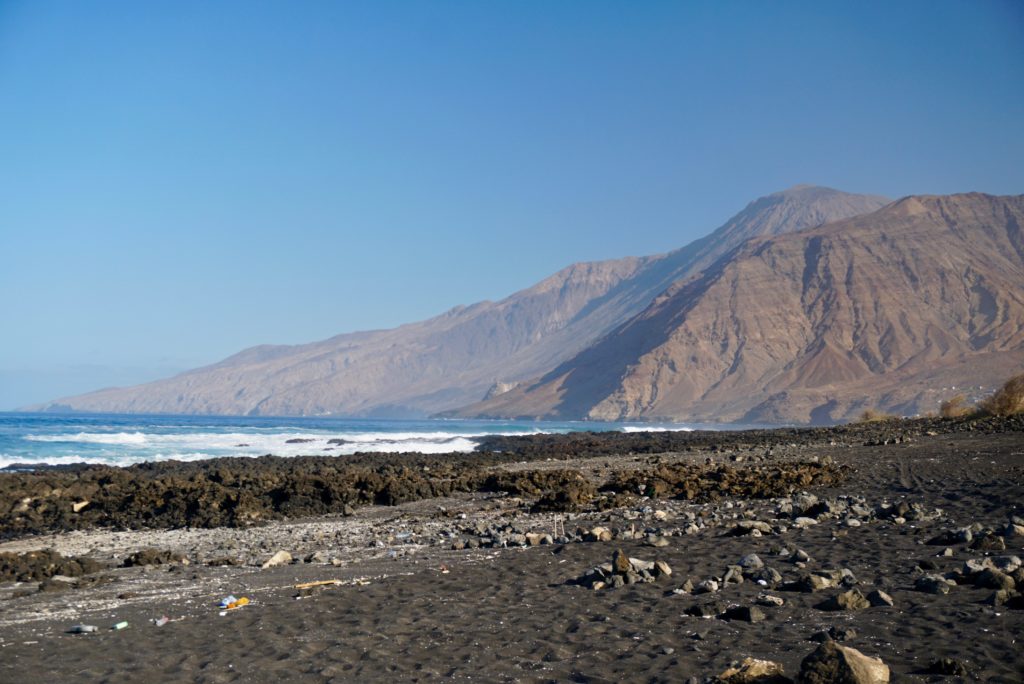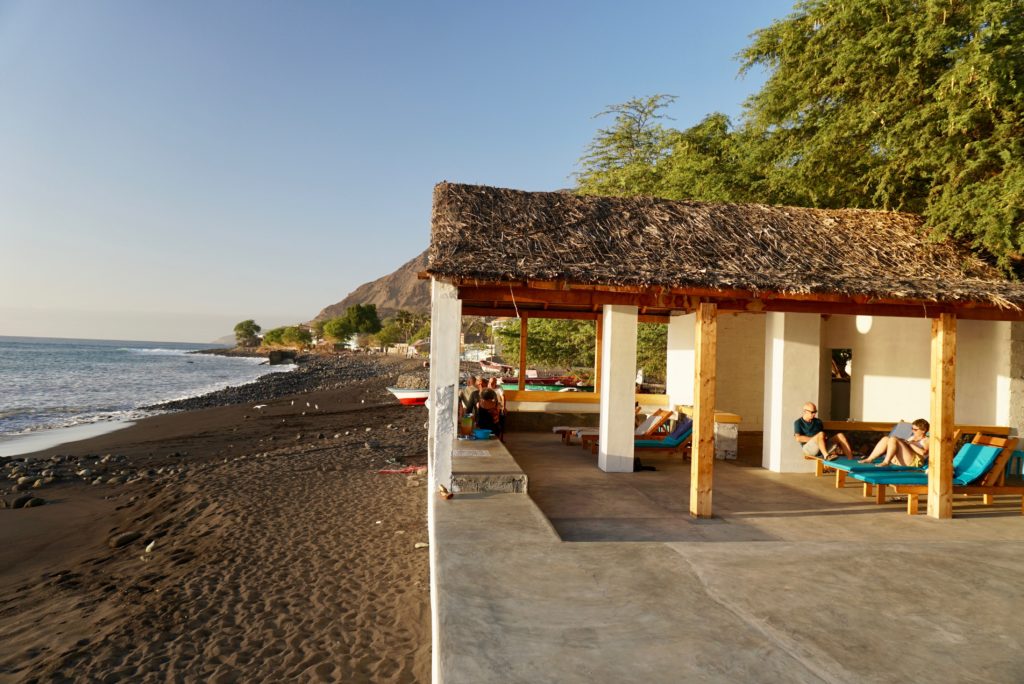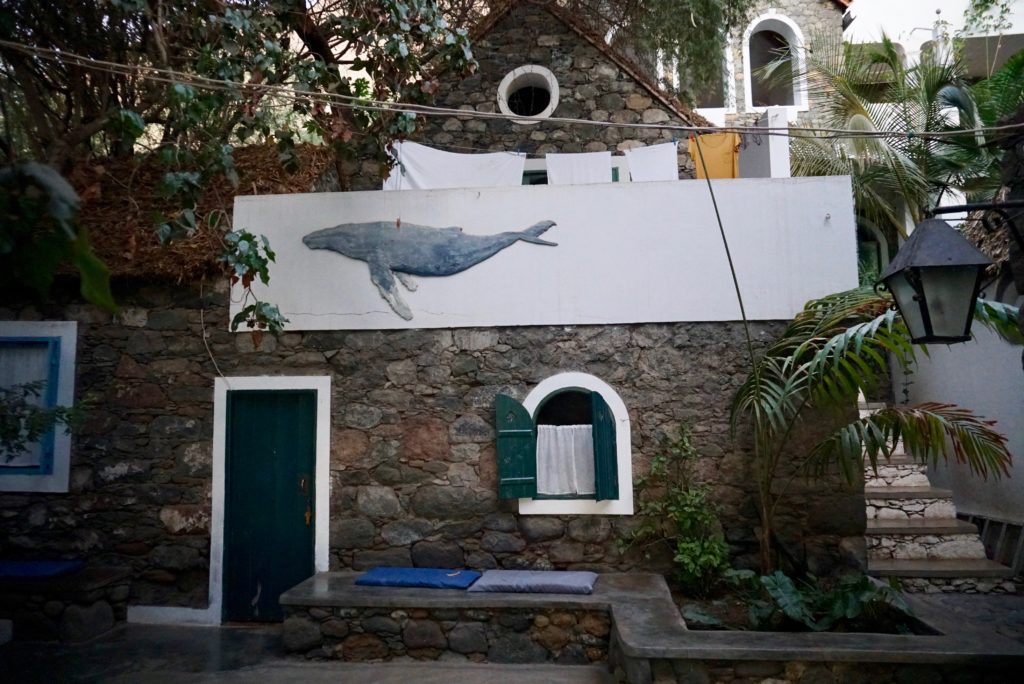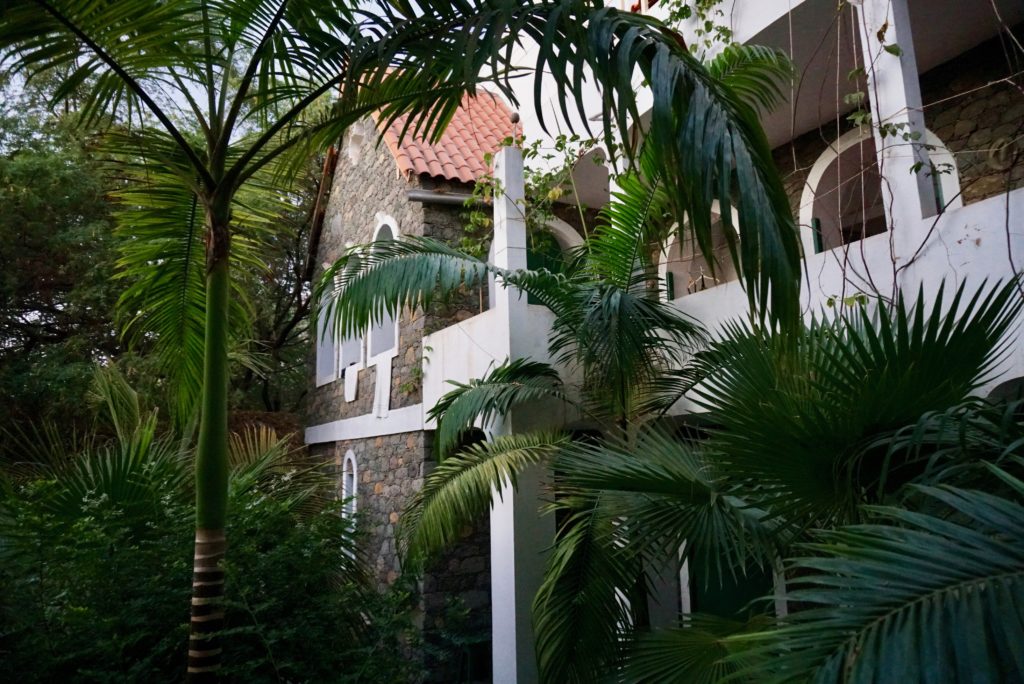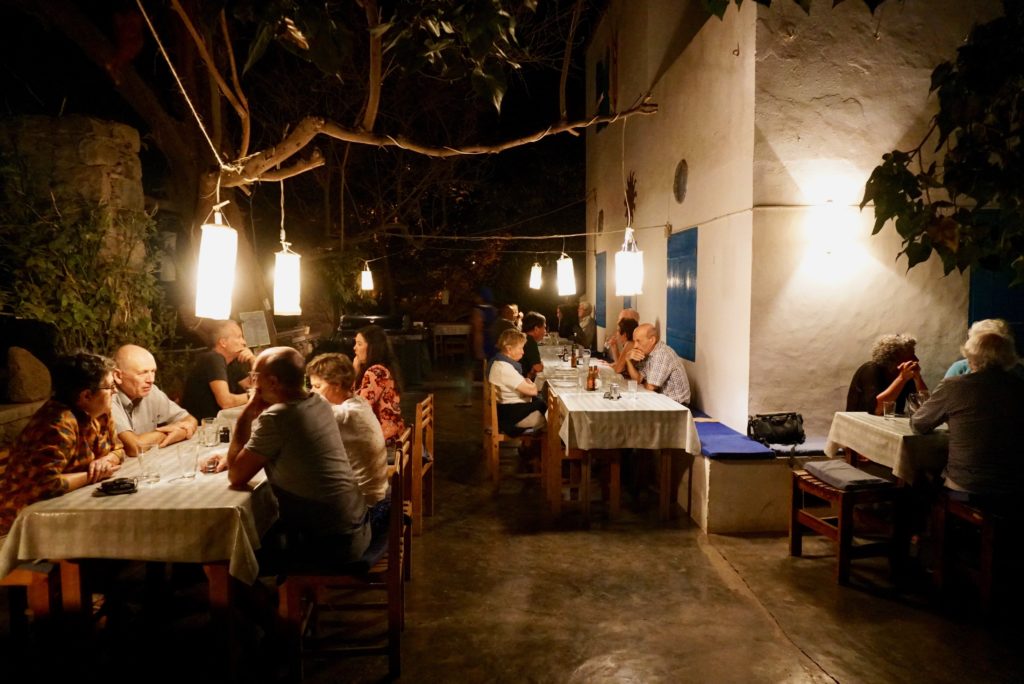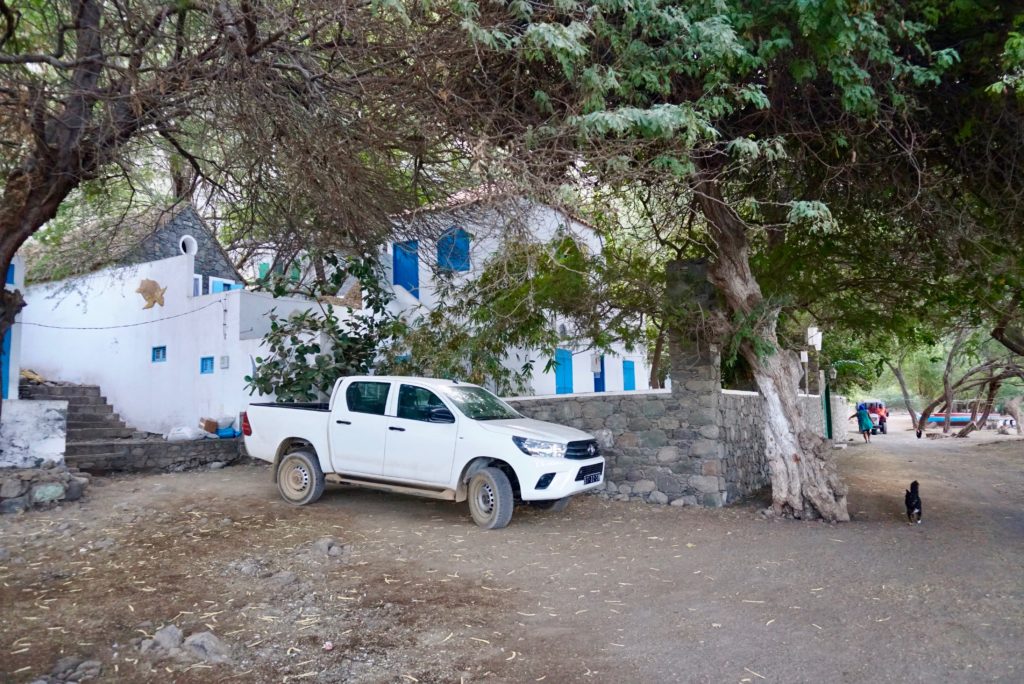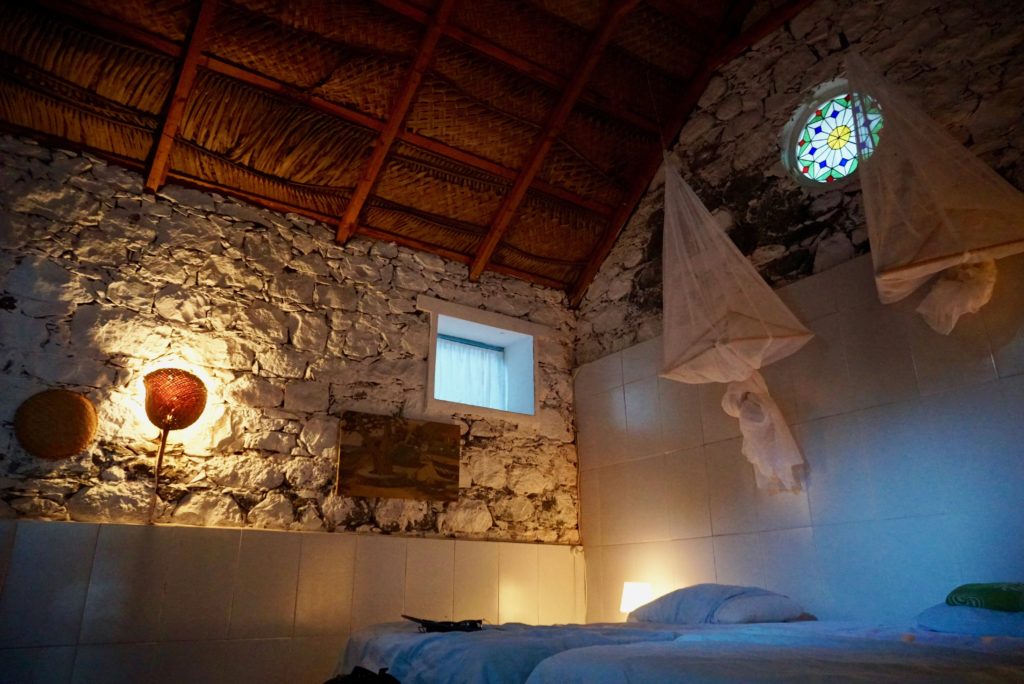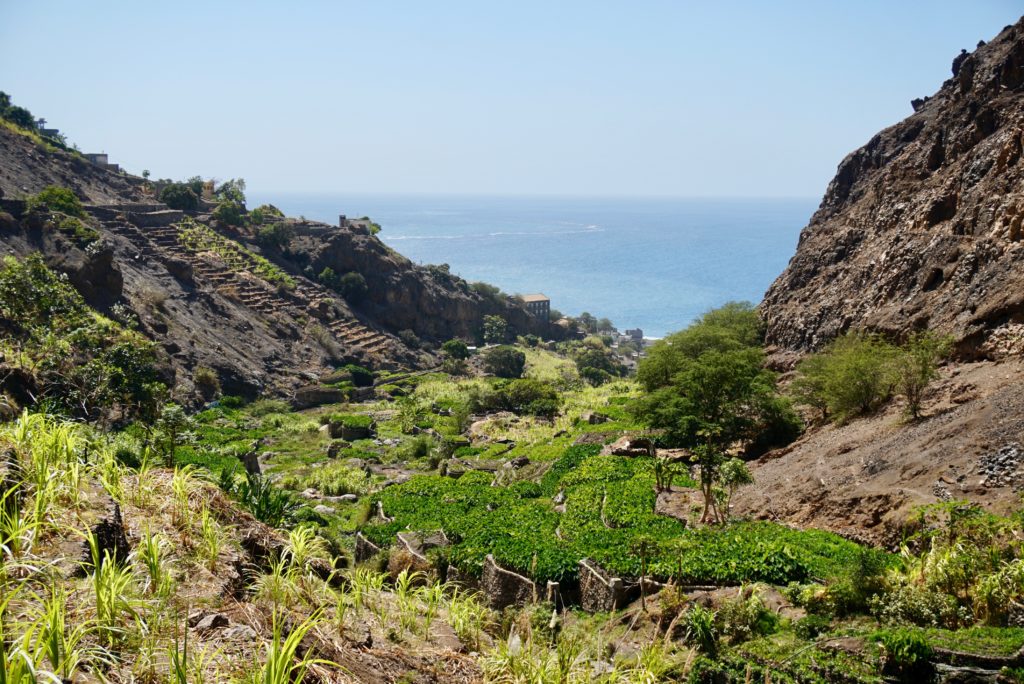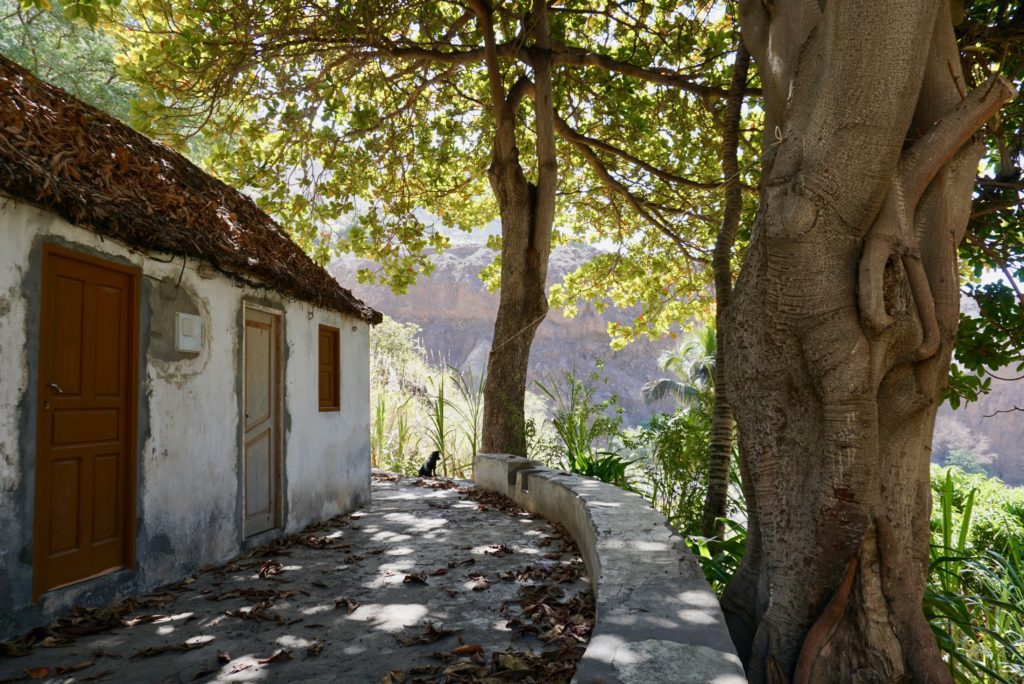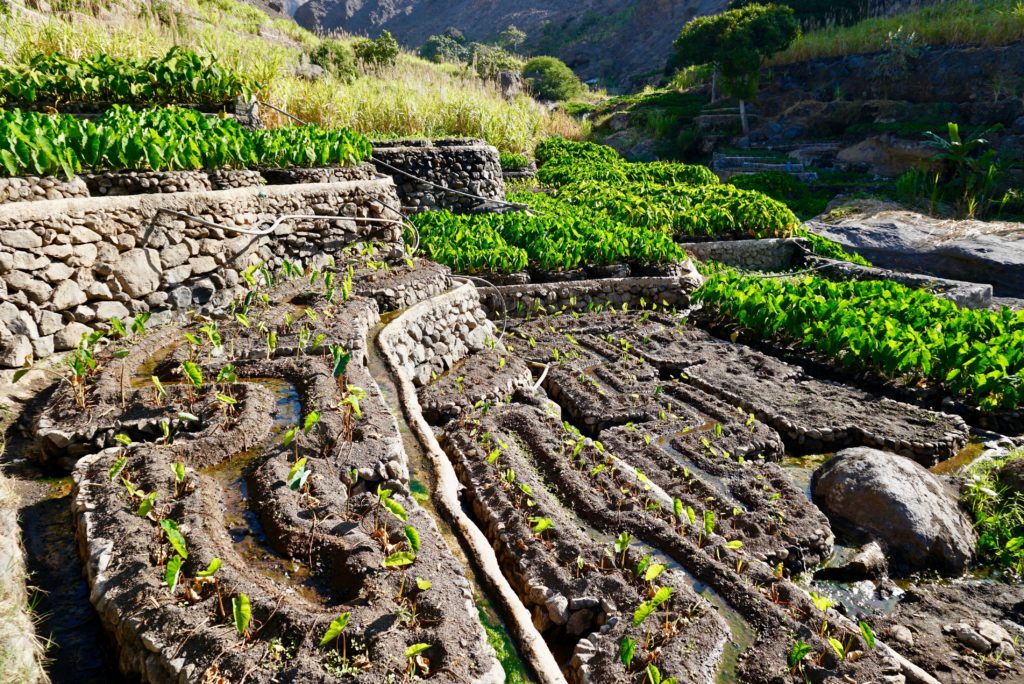Disclaimer: This is going to be a long one mostly not about sailing but about Cabo Verde. The islands can be visited without a boat and I encourage everyone to do so. It is an incredible place, read on to learn more.
Arriving to Mindelo on the island of San Vincente had a great touch of accomplishment to it. This is really the place where only people hang out that are serious about the Atlantic crossing. No dreamers, no quitters here. We felt like part of a small exclusive club of actual sailors and our local hangout was the Floating Bar where we sat on many of the first days all the way from breakfast trough dinner. Browsing the internet, doing research, calling friends and family back home and glancing out into the dusty surroundings of the deserted island with its jagged peaks opposite the bay.
It’s a hustle and bustle, people come and go in our little club. Every day someone leaves and new people come, crew is being looked for and exchanged and spare parts and last minute repairs are an ongoing topic. I love the vibe and I think it was at least 4 days until I steped outside of the marina for the first time.
The town of Mindelo is scruffy but colorful and full of smiles and lively people. Rafaele shows us his favorite places, bars, the laundry and the African market. He is an Italian delivery skipper and works on a 24m aluminum yacht for a German owner. We meet the guys of Mereweather again, a young Australian couple that we met in La Graciosa. Lots of French folks exchanging crew and we meet a Swiss couple in their early twenties who got dumped from their boat.
Everyone speaks of the “Valle de Paul” on the neighboring island of Santo Antao it’s almost like this myth and we sure get curious. One evening over some beers with the other Swiss guys we decide to take the ferry over to Santo Antao for some days, rent a car and find out what the buzz is all about.
The island across the channel
It’s a rough ride trough the channel that separates San Vincente and Santo Antao. The wind and swell is from the beam and the ferry guys supply waste bags for seasick people. Approaching Santo Antao feels disappointing. It’s just as deserted and scruffy as the other side, nothing of the promised green valleys as far as the eye can reach just brown and dusty mountains.
The slow restaurant with the friendly people
The rental car company is quick and easy in supplying us with a jacked-up Dacia and off we go. Before heading up into the mountains to find the famous green crater we try to find a groceries store to get some water and snacks. We find it at the end of the town next to a little restaurant. We’re hungry and walk around the front door like stray dogs. It’s a small place with 2 tables and can barely be called a restaurant, we’re not sure what to make of it at first but not long and we sit on one of the tables with the somewhat confused cook trying to explain the simple menu. It seems this area sees very little tourists. The other people that hang around in the place are friendly and a bit tipsy. It takes a good one and a half hour to make a few simple plates of rice and some eggs for us. And we make the next mistake when we order a coffee after our lunch. I peak into the kitchen where I find the lady heating up a huge pot of what must be at least 5 liters of cold water over a small gas burner. The coffee takes another 40 minutes and uses only a fraction of the water that she has just brought to a boil. In the meantime a guy with a guitar who has been sitting in a corner starts to play and sing and an old man tells us about his days as a mariner, sailing in Germany and the Baltic sea. From time to time a crazy person or a beggar tries to get in and the lady of the restaurant sends them away with loud chants. We’re amused and a bit lost, it’s already 4 o’clock as we head off towards the mountain pass, full of anticipation what the rest of the island will reveal.
The caldera with cows and fields
The streets are all made from cobblestones and I will later learn, that each and every stone is handmade and even learn how to make them myself. The road is winding and the five of us get a good bounce in the small car. As we climb higher the first trees come into view and than all of a sudden we are in front of it. The famous crater that has farmland on its bottom covered in grass, trees and cows. We drive down to the bottom and walk across the fields. A local farmer comes over and keeps us busy with stories about football and the “mundial”. Other than the names of the players we don’t understand much and he does not understand much of what we say but he makes up for it with his enthusiasm. We keep talking. It’s that situation when you actually don’t understand much, but the conversation as such is of more value that the actual substance. We exchange our best wishes give the guy some chocolate and head of higher up into the mountains towards the pass.
Click images to enlarge
The forest becomes greener and more dense as we reach the top. The road is very narrow now, winding and at times cut into the mountain. The views into the jagged mountain valleys below us is just breathtaking. It’s in the contrast, incredibly steep and rocky but very green and fertile on the valley floors. It is unlike any landscape I have ever seen. Evening is coming and we have to get down to the coast to find a place to sleep. 30 Minutes later we emerge into the main town on the north coast. Ribiera Grande is a busy town, it sits low in the steep costal cliffs which are of a dark grey color. The houses of Ribeira Grande are without color and mostly grey concrete blocks giving the whole setting a science fiction look and feel. The road along the coast continues like this and is very alien to me. We arrive into the little town of Paul and start looking for a place to sleep after a few attempts at fully booked places we are successful at “Mar y Sol” a sweet little house on the main road just across the rocky shore. It is run by Marisol and her family. We negotiate the price for two rooms and then head off to get dinner at a little restaurant/shack run by an Italian guy who makes pizza. He built a bigger hostel nearby with his wife but something went wrong and he had to start his own place. He tells us a lot about the region and the culture. He brought up a son here and gives us some good insights. We will later get to know his wife and hear the other side too. It’s a nice atmosphere and we enjoy a peaceful evening.
Hostel Mar y Sol in Paul
The next morning we leave early to drive over to Ponta do Sol for a hike along the north coast. The hike is very easy and goes along a cobblestone road that is even used by small local cars. But the views are again just unbelievable. My drone that I never use is requiring updates and my normal camera is unable to catch the greatness of this stretch of the coast.
Fontainhas on the north west coast
We stop at Tchu’s bar for a few drinks before turning back. Tchu, at first a bit shy seems to have a bit of a crush on Nadine. We return to “Mar y Sol” for another night. The next morning we drive up to the crater again where the hike down to the “Valle de Paul” starts. I drop off the crew for the hike down and return to the ferry harbor to go across to pick up my parents, whom I have invited to see this incredible place. I’m happy to have been able to convince them to fly on such short notice (which they are all but used to). We spend two days on the boat relaxing and then take the ferry once again over to Santo Antao. We plan to see the “Valle de Paul” the north coast and then drive the forbidden road to “Tarafal” in the south. I have a deal with the rental car guy. He will close his eyes if I rent the Toyota Hilux which has all terrain tires and I have to promise to wash the car before returning it so his boss does not find out. The Hilux? Done.
The Hilux at work
On the ferry I meet Hellen, we chat for a bit she is German and works as a vet in Mindelo and wants to hike the Valle de Paul on her day off. I invite her to drive up with us and underway I decide to walk down with her and have dad and mom drive the car down to the coast. Pick-Up trucks are widely used for persons transport on the island and my parents will pick up people on the way to the next village, a women with a child that needed to go to the hospital or the local flip flop sales person who all jump in the back of the truck bed.
The “Valle de Paul”
Helen and I start the 6 hour hike at around 1pm. From the top of the crater we can see the whole valley and the sea. The dimensions are hard to comprehend and the camera (or myself) could not capture the whole picture of the valley well it. Our trail goes down and then up again over a side ridge before finally descending towards the sea. The view from the top is breathtaking but it will get better and better the deeper we immerse our self’s into the “Valle de Paul”.
This hike did something to me. Sometimes people speak of nature as spiritual place and stuff, I’m not that kind of person. But something is happening and we both feel it. Around every corner there is another incredible view, a special plant or a hidden alley to be discovered. We meet some locals who tell us about the produce and plants they grow and buy some local sweets and coffee from a farm women whom we meet along the way. We have started out rather late in the day and now as we climb up the ridge the sun is getting low. On the top we have another incredible view down into the lower part of the valley. The light is getting incredible as we transit from golden to blue hour. We pass a little house in the midst of lush banana trees and sugarcane plantations. Lots of beautifully dressed locals are coming up the trail, they are cheerful and had a little drink we could tell. I ask them if they have a wedding but they reply that they had a funeral. But they all have a smile on their faces.
The whole valley features complex watering systems and millions of terraces. It is an incredible system of trails, watering canals, reservoirs, houses and plants, all beautifully interconnected. Oh and did I say how lush it was!
The sun has set as we finally arrive at the base of the valley. We turn around like we have done so many times that day and look up at at the steep mountains from where we have just walked down. We look at each other and don’t say a word our faces are just in disbelieve of what we’ve just seen and experienced. It’s the magic valley, I don’t know how to explain it. We walk into town and have a beer.
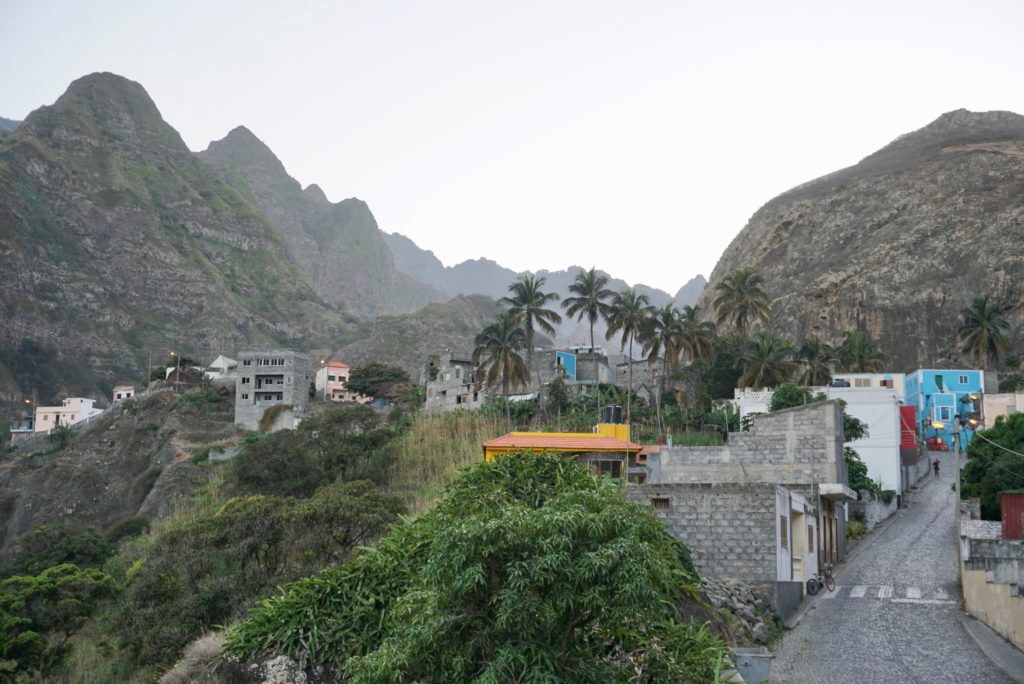
Looking up from the base of the valley
Helen returns to work the next day and I take my parents to the west coast. We walk to Chu’s bar who is rather surprised to see me again and visibly disappointed, that I did not bring Nadine. On the third day we leave early to drive around the north east side of the island and start our way to Tarafal.
Underway to Tarafal
The cobblestone road is just epic and the views are grand and exotic. Just under the pass is a high plateau and we find a stable with goats and two farmers. We can’t tell what the goats eat as the ground is just completely and utterly barren. The trail there looks promising and we drive it until we come to a point where we can look across the plateau and all the way down to the sea. I love high plateaus, you just feel so far away from the earth and somehow closer to the sky. We continue the off road trail a little bit further down and around some bends. There are some more farmers with goats and then all of a sudden around another sharp bend the road stops at the edge of a hill.
We find ourselves on the work site of roughly 20 workers hacking stones. In front of us a pile of perfectly square cobblestones. No power tools just sledge hammers. They are surprised to see us, I am too and feel like intruding. But wait let’s just talk to them. I jump out and walk up to the first guy. “What are you doing here?” he looks at me friendly and explains that they are producing the cobblestones for the new road down to Tarafal. Over the next 30 minutes they all together show us what they do. One guy shows me a little fire between the stones where they make their lunch, a traditional dish. He hands me a spoon: “try”. I turn around and see my dad with a sledgehammer smashing stones with a local guy explaining to him where to hit the stone to make a clean line. They say it’s hard work in the heat and the dust but they all appear proud of their work.
Fishing boats in Tarafal
The road down to Tarafal is some of the worst road I have seen. We understand why the rental car companies don’t allow their customers to drive down here. I put the Hilux in low gear mode and we are going down at walking speed and then finally head along the coast and trough the black sand dunes into the village of Tarafal.
Due to it being so hard to reach Tarafal is pretty much cut off from the rest and the island. The “road” was built recently and before that everything and everyone came in and out with boats via the sea.
Just at the entrance of the village we find a little gem of a hotel called “Mar Tranquilidade” the name speaks for it self it’s just perfect. It’s not 5 star but it’s beautiful, friendly, just like a guesthouses should be with a good portion of self-responsibility and a sustainable concept. The owners are a German and US sailor couple, that came ashore by sailboat years ago and started building the place. The road down to Tarafal will be finished within the next one or two years and when completed will change Tarafal and its appeal forever. I want to go back before that happens!
Mar Tranquilidade
The next day hike up along the river and deep into the valley in search of a waterfall that we could not find. We enjoy some incredible sunsets at the beach house with some local fruit punch. I sleep like a baby for two consecutive nights. A proper break before I have to go back to the boat and start preparing for the crossing. I have been on the island of Santo Antao for ten days and to conclude this: Go there, see it!
Preparing to cross the Atlantic
Back in Mindelo we slowly start preparing for our departure. We do laundry, buy groceries and go to the veggie market. The mechanic has still not fixed the cooling water pump to my satisfaction and is chiseling around my orders and wishes. In the end he comes around with a horrendous bill even for continental European standards, which I refuse decisively. We agree on 50% of what he asked which is still too much. The Marina was handed over from German to local management and is a mess. Very unflexible and arrogant but I don’t care, we had a great time all in all. We pay our bill and get ready to set sail. Not without hangin out for some beers at the Jazzy Bird bar on our last evening. Nadine has fallen in love with a local guy and when I get up in the morning I see her slurping back to the boat at 8 in the morning to get her share of work done for our departure. Good girl, what a reliable crew I have! (not being sarcastic.)
Ocean Viking (Bavaria 38 Ocean, NOR) has left three days prior and Ocean Dream (Hallberg Rassy 40, CA) the day before. The wind is still strong as we decide to leave. We have not done any strategic planning for this crossing other than set the course towards south America and checked our coms. We will either go to Suriname or to French Guyana we’re still undecided.
Rocky start to a great passage
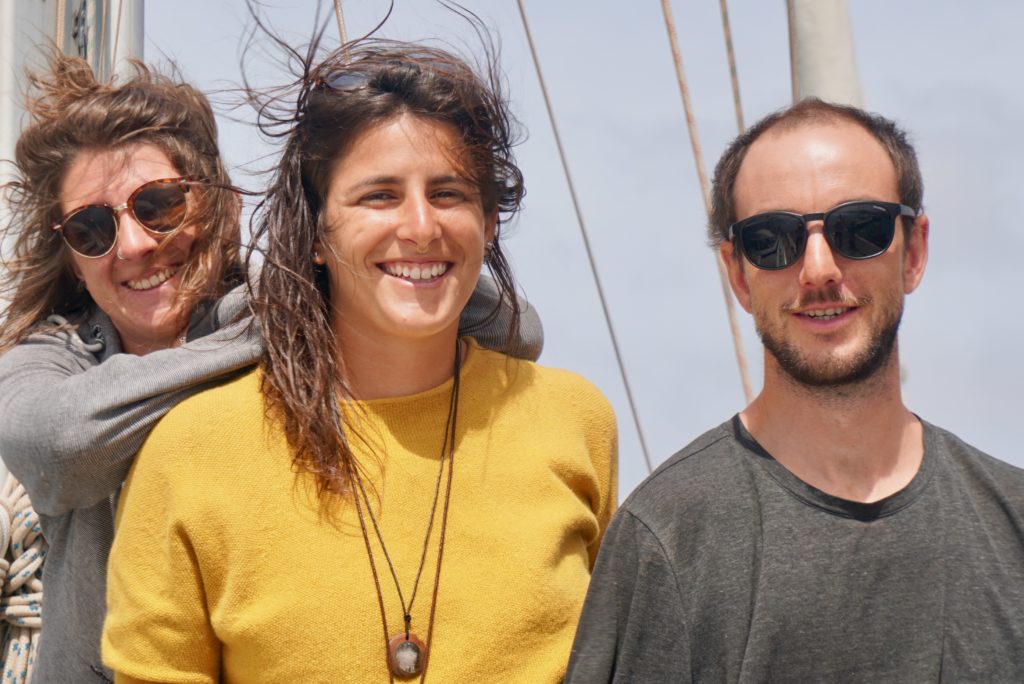
The Atlantic crossers in Mindelo, February 19th 2020 14:46
The wind blows with sustained 42 knots trough the bay as we throw off the lines and move the boat over to the fuel dock. Docking at dead slow speeds, bow into the wind with the use of the thruster. Another beautifully executed maneuver. An older French couple comes over and wishes us well. They have seen us coming in and had nothing but praise for our maneuvers. We fuel up our diesel tank to the brink. Unlike many other boaters I’m not carrying any spare tanks on deck. I don’t believe in loose objects on the deck like dinghies or fuel canister where lines get tangled and my sight gets blocked. Hallberg Rassy built big fuel tanks into their boats and 350 liters is enough.
I’m not nervous but I feel my surrounding is. And that makes my a bit giddy too. The dockmaster wants us off the fuel dock even though nobody is waiting. Some random people come to say goodbye, some sailors are concerned and tell us to wait till tomorrow for the winds to come down.
We ask to get the lines ready on the dock and all of a sudden we are untied. What? We push off from the dock with the thruster in order not to mess up. It works but I could not even say good bye to my parents on the dock. We set sails in the protection of the inner bay, a very reefed main and genoa. The wind greets us with sustained speeds of 40 knots and lots of flying water across the beam. We pass the oil rig which has been towed into the bay last week and sail on the wind towards the middle of the channel, where we change to a running course straight towards South America 1800 nautical miles away. Big swells greet us in the channel, the air is hazy and the light is beautiful it’s about 4 pm. We somehow manage to tangle the Genoa around the forestay and are thinking of sheltering in the bay on the south to sort out the mess. The heart rate is up but luckily we manage to solve it in midflight and continue on. In the meantime the wind has calmed down to 30 knots. The downwind setup works, we are flying along wing on wing. At sunset we leave the islands behind and the wind calms down even further to a pleasant 25 knots giving us an average speed of 7.5 knots.
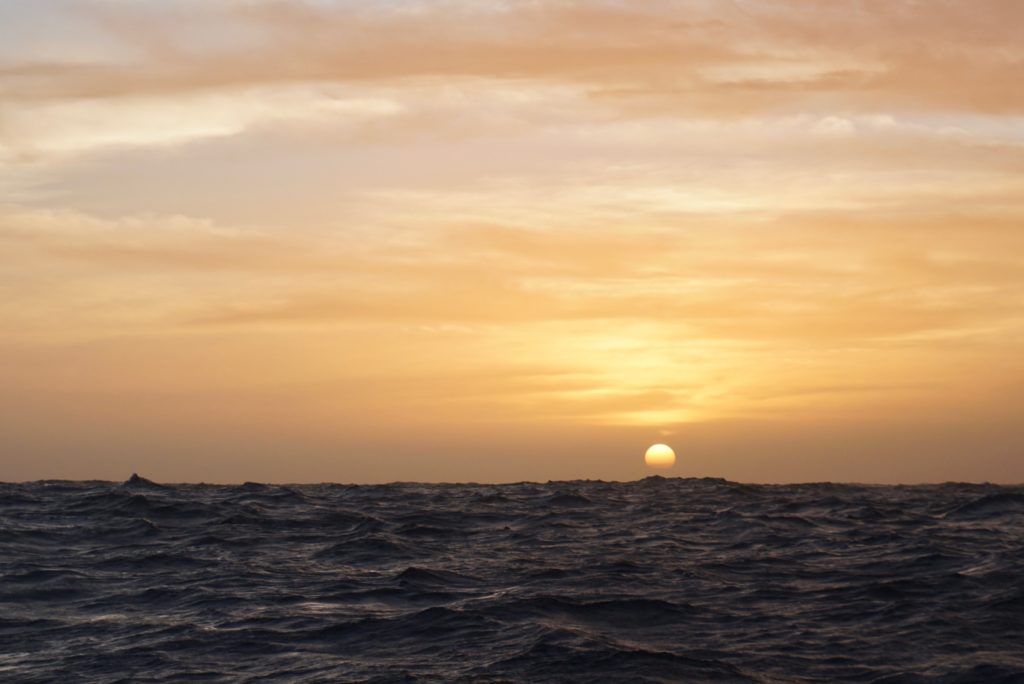
It’s a beautiful sail as we start into the first of 11 nights. We’re full of excitement for what will turn out to be a quick and uneventful dash across the pond with an average speed of 6.9 knots. One fish caught, many good memories and me getting fed up with the rolling back and forth around mid Atlantic.
